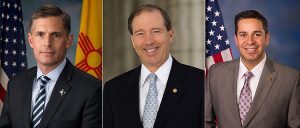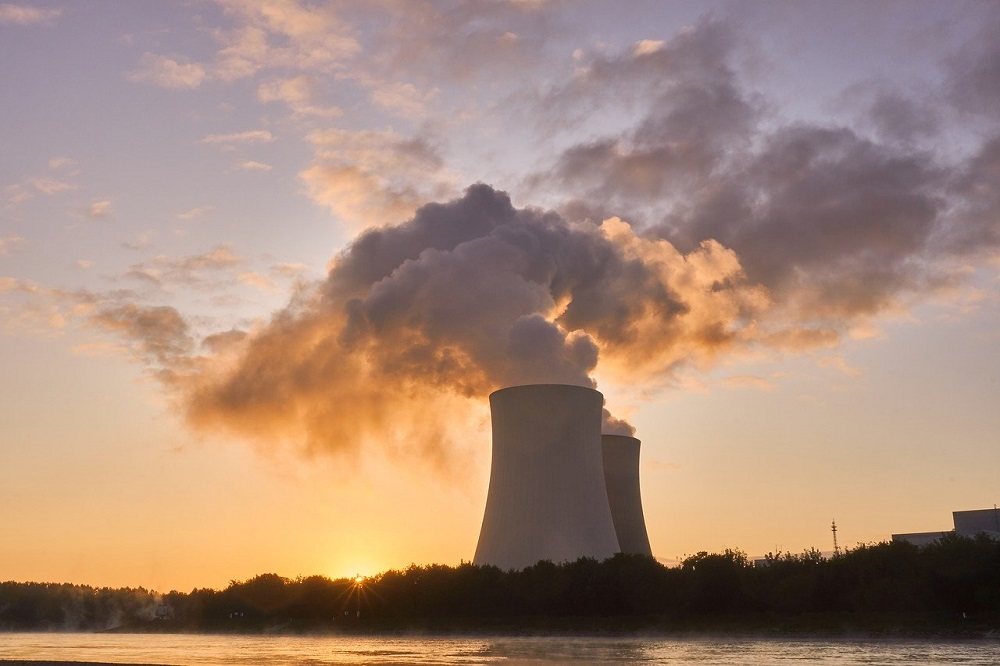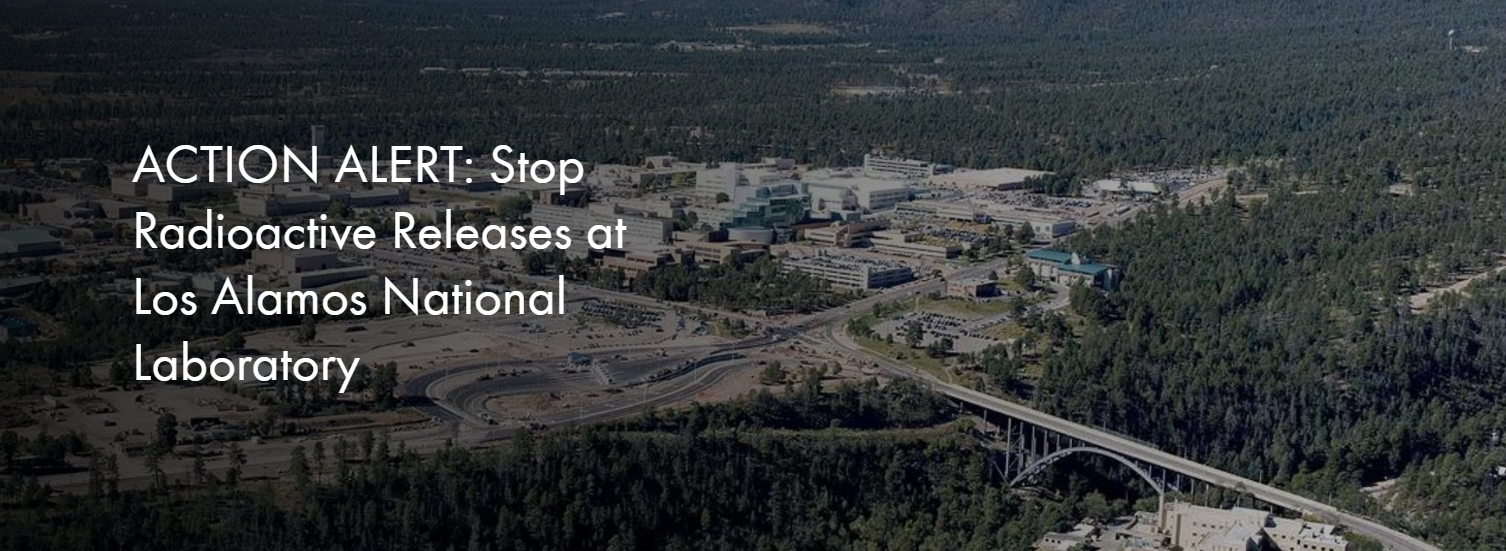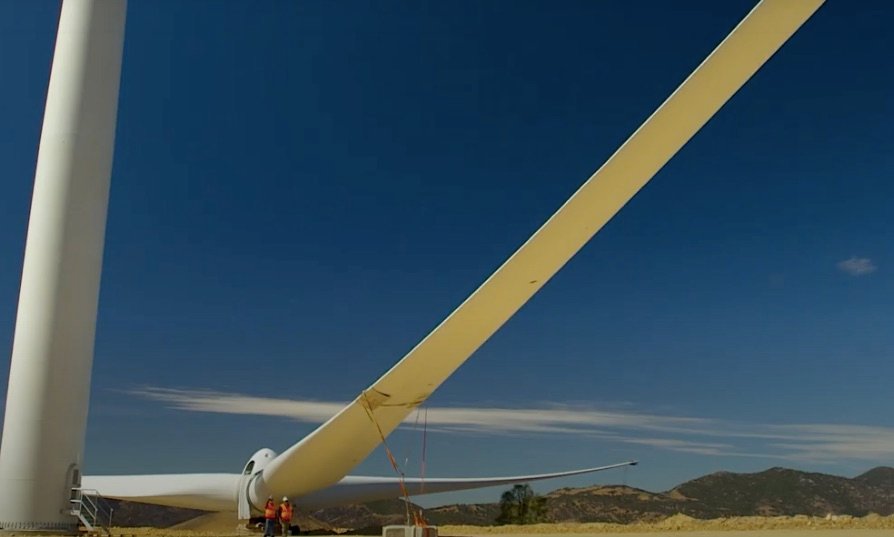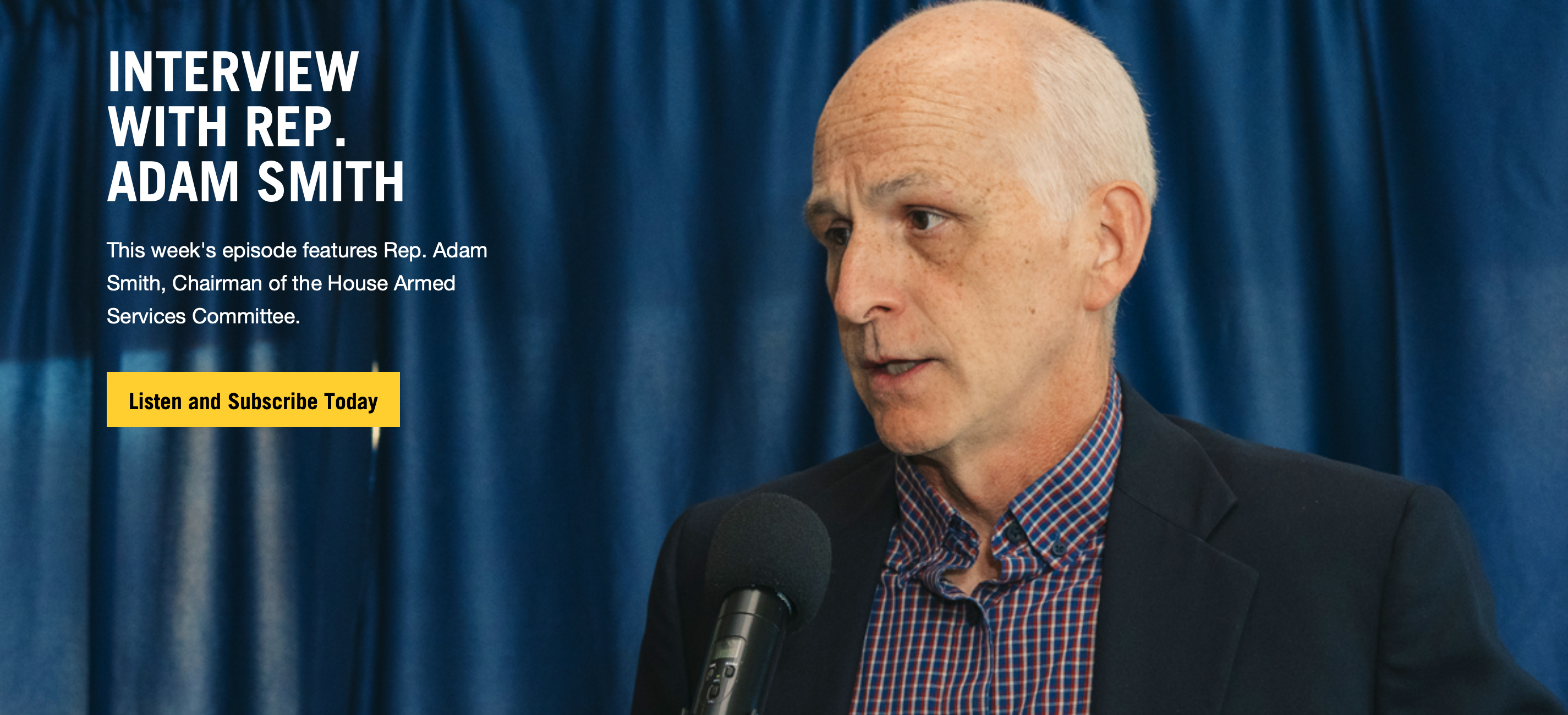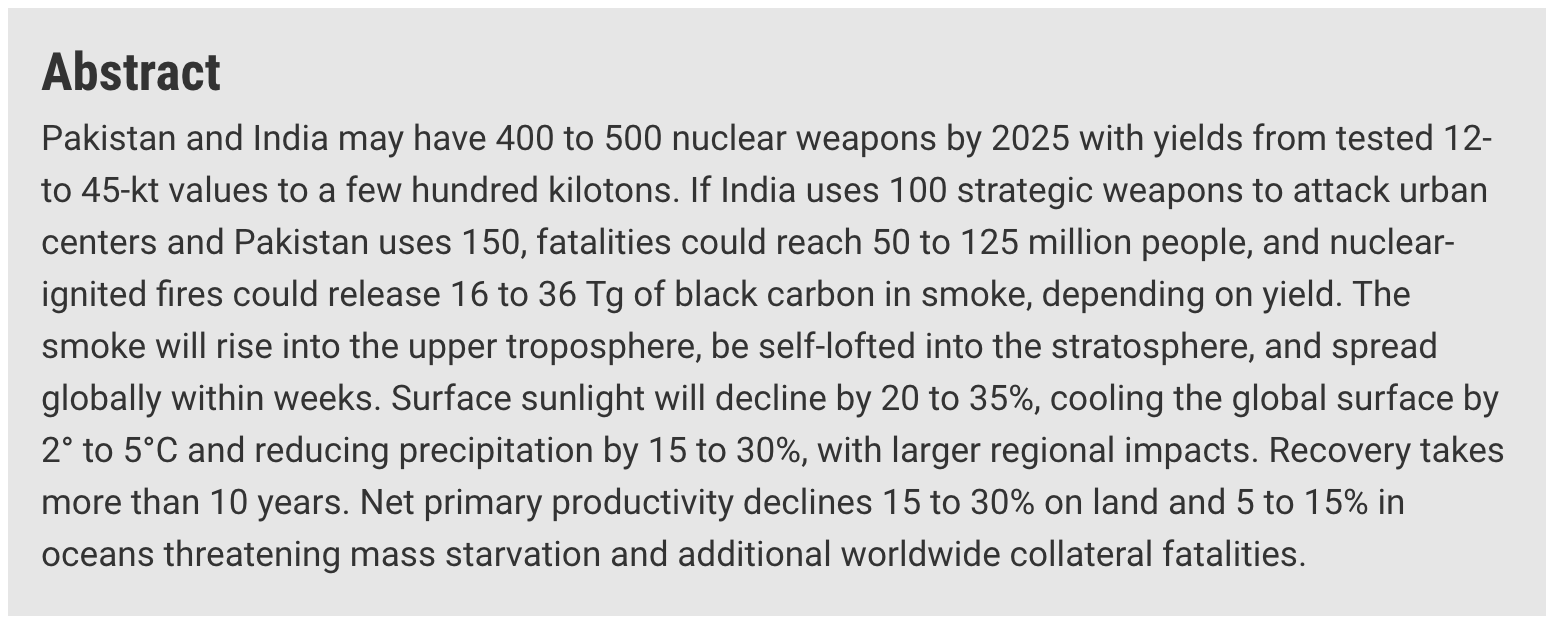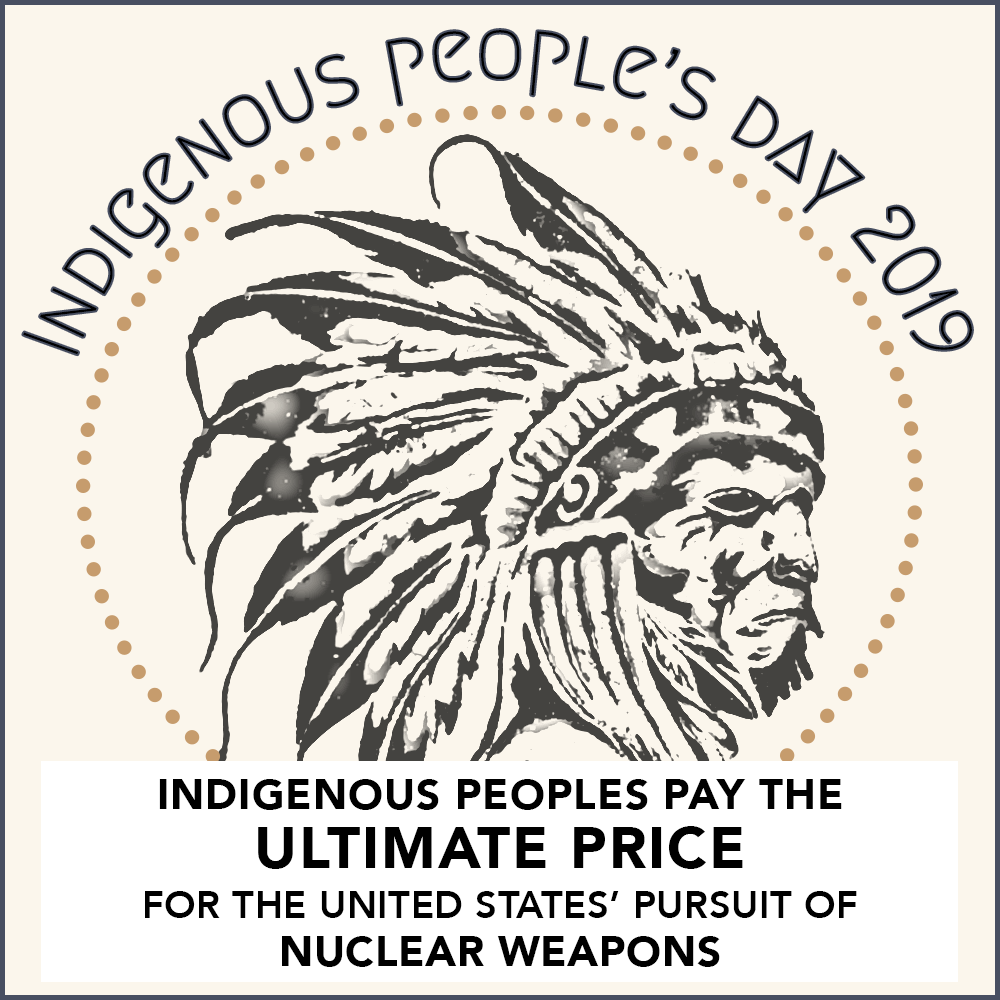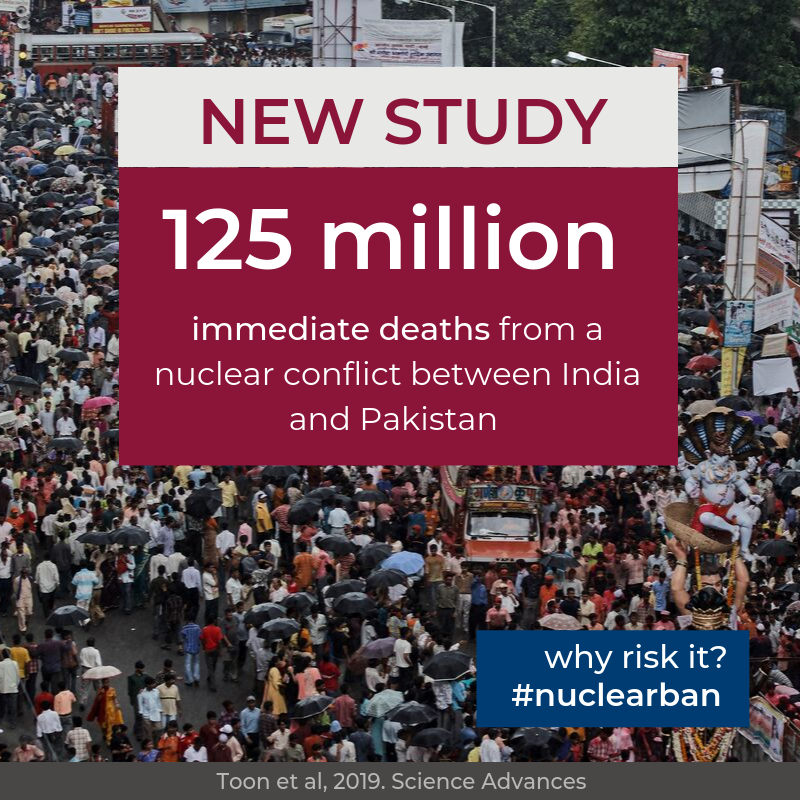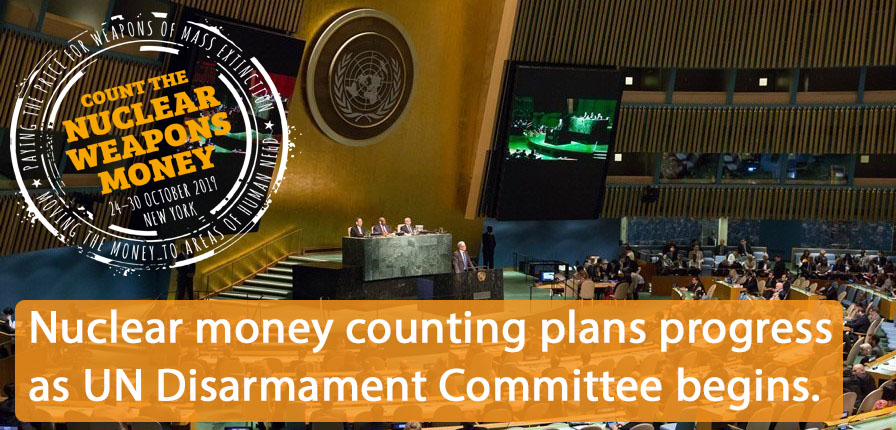Nuclear News Archives – 2020
Nuclear Watch New Mexico’s Critique of Some NNSA Answers to Questions on LANL’s Planned Tritium Releases
November 4, 2020
The Los Alamos National Laboratory (LANL) proposes to vent up to 114,000 curies of radioactive tritium gas to the open atmosphere while claiming that it poses no public health and safety risks. Public outcry and congressional pressure prompted the National Nuclear Security Administration (NNSA) to host a public information virtual meeting on this issue on October 20. Due to the overwhelming turnout of some 150 interested citizens and ear-splitting technical difficulties NNSA is holding another public virtual meeting at 5:00 pm Thursday November 5.
Interested citizens can join the discussion at https://www.lanl.gov/environment/flanged-tritiumwaste-containers.shtml
If you wish to speak or ask questions you should pre-register at the same site.
Nuclear Watch New Mexico Comments on U.S. Nuclear Regulatory Commission’s Interim Storage Partners/Waste Control Specialists Consolidated Interim Storage Facility Draft Environmental Impact Statement
RE: Docket ID NRC-2016-0231/Report Number NUREG-2239, the U.S. Nuclear Regulatory Commission’s Interim Storage Partners/Waste Control Specialists Consolidated Interim Storage Facility Draft Environmental Impact Statement
Dear U.S. Nuclear Regulatory Commission (NRC) Commissioners and Staff,
We respectfully submit these comments in response to the Draft Environmental Impact Statement (Docket ID NRC-2016-0231) regarding Interim Storage Partner’s (ISP) application for a license to build and operate a “Consolidated Interim Storage Facility for Spent Nuclear Fuel in Andrews County, Texas” (NUREG-2239), which plans to bring at least 40,000 metric tons of spent fuel, high-level radioactive waste, from nuclear reactors around the country to west Texas. Please know that we do not consent to our region becoming a national radioactive high-level waste dumping ground or to transporting up to thousands of canisters of radioactive waste through thousands of communities. We should not have to risk the contamination of our land, aquifers, air, plants, wildlife, and livestock. We do not consent to endangering present and future generations.
Read/Download full comments HERE
Release Of Radioactive Tritium A Bad Idea
 BY DR. VIRGINIA NECOCHEA & CHARLES DE SAILLAN
BY DR. VIRGINIA NECOCHEA & CHARLES DE SAILLAN
Tritium is a radioactive isotope of hydrogen. It emits beta radiation, which can be very dangerous if inhaled. Like other forms of ionizing radiation, tritium can cause cancer, genetic mutations and birth defects, and assorted other adverse health effects.
So it is not surprising that many people were dismayed when they learned that the U.S. Department of Energy (DOE) and its contractor at Los Alamos National Laboratory plan to release 114,000 curies of tritium gas into the atmosphere at Technical Area 54 and, possibly, at Technical Area 16. DOE has been storing this waste tritium in four steel canisters at TA-54 at the Laboratory for more than a decade. Over time, pressure has built up in the canisters, which DOE plans to relieve by venting the tritium gas into the atmosphere.
DOE Issues Controversial Decision to Pursue a Plutonium Bomb Plant (PBP) at Savannah River Site (SRS); Inadequate Environmental Review and Lack of Justification for Production of 50 or More “Pits” per Year to Modernize Entire Nuclear Weapons Stockpile Open to Legal Challenge
November 5, 2020
The U.S. Department of Energy (DOE) today issued a formal decision that it will pursue a massive Plutonium Bomb Plant (PBP) at the DOE’s Savannah River Site (SRS) in South Carolina, in order to produce plutonium “pits,” or cores, for nuclear warheads. The provocative decision, which adds fuel to concerns about a new nuclear arms race with Russia and China, drew immediate opposition from public interest groups near DOE sites in South Carolina, New Mexico and California.
The issuance by DOE’s National Nuclear Security Administration (NNSA) of the “Record of Decision” (ROD) on the Environmental Impact Statement (EIS) on pit production at SRS, issued in late September, officially affirms the “preferred alternative” that DOE intends to produce a minimum of 50 plutonium “pits” per year by 2030 at SRS. Also on November 5, NNSA issued an “Amended Record of Decision” (AROD) to its 2008 nation-wide Complex Transformation Programmatic Environmental Impact Statement that incorporated its SRS pit-production decision.
Subcontractor sues WIPP for $32 million in canceled work
Critical Applications’ ventilation project was tied to a radiation leak in 2014 that often is recalled as the “kitty litter” incident.
BY: SCOTT WYLAND | santafenewmexican.com
A subcontractor is suing the company that operates the Waste Isolation Pilot Plant in Southern New Mexico, claiming $32 million for what it says was gross mismanagement of a major construction project at the nuclear waste disposal site.
In a federal lawsuit, Texas-based Critical Applications Alliance LLC, which was hired to build a ventilation system at WIPP, says Nuclear Waste Partnership was such a disorganized project manager that it caused repeated delays and cost overruns, resulting in multiple breaches of contract.
The subcontractor also complains WIPP managers abruptly canceled its $135 million contract in August with no explanation and without paying millions owed.
Political strategist & lobbyist each plead guilty in federal public corruption racketeering conspiracy involving more than $60 million
United States Attorney David M. DeVillers
Southern District of Ohio
FOR IMMEDIATE RELEASE THURSDAY, OCT. 29, 2020
CINCINNATI – A longtime campaign and political strategist for Ohio House Representative Larry Householder and a lobbyist hired by an energy company to funnel money to Householder’s enterprise each pleaded guilty in federal court today.
Jeffrey Longstreth, 44, and Juan Cespedes, 41, of Columbus, each pleaded guilty to participating in a racketeering conspiracy involving more than $60 million paid to a 501(c)(4) entity to pass and uphold a billion-dollar nuclear plant bailout.
U.S. to Launch Minuteman III Missile Test Just Five Days After 50th Country Ratified Treaty on the Prohibition of Nuclear Weapons
“While most of the world’s countries are evolving to a view that nuclear weapons are unacceptable under all circumstances, the U.S. is testing a nuclear missile built to fight the Cold War; one which is designed to cause the indiscriminate slaughter of hundreds of thousands of people.”
By: Sandy Jones | wagingpeace.org

SANTA BARBARA, CA– Early tomorrow morning, between 12:01 a.m. and 6:01 a.m., the United States will launch an unarmed Minuteman III intercontinental ballistic missile from Vandenberg Air Force Base. While the Air Force maintains that missile tests are planned many months in advance, the timing of this test is questionable, at best.
This test will take place just five days after Honduras became the 50th country to ratify the Treaty on the Prohibition of Nuclear Weapons (TPNW). With the 50th ratification, the treaty will enter into force on January 22, 2021. The treaty prohibits the possession, testing, use, or threat of use of nuclear weapons.
Column: Yes, Santa Susana is a ‘landmark’ — as a historic environmental disaster
The Santa Susana Field Laboratory site is “one of the most toxic sites in the United States by any kind of definition,” Jared Blumenfeld, head of the California Environmental Protection Agency, told me. “It demands a full cleanup.”
BY: MICHAEL HILTZIK | latimes.com

One thing is certainly true about NASA’s curious effort to place 2,850 acres above the Simi Valley on the National Register of Historic Places: The parcel is certainly a landmark.
Among the points in dispute is what makes it so.
To several local Native American tribes, including the Santa Ynez Band of Chumash Indians, the Ventura County site’s cave drawings and rock shelters bespeak a cultural heritage dating back centuries.
The time has come for us to make sure that we hold the polluters accountable for their legacy….We will make sure the site gets cleaned up and we will exercise our legal authority in pursuit of that. – CALEPA SECRETARY JARED BLUMENFELD
To environmentalists and the site’s neighbors, it’s historic for the extent of its contamination by chemical and nuclear research performed there during the Cold War.
‘It just goes into a black hole’ The Trump administration is burying dozens of studies detailing the promise of renewable energy, impeding a transition away from fossil fuels
“The disposal of contaminated water at the Fukushima Daiichi plant has been a longstanding problem for Japan as it proceeds with an decades-long decommissioning project. Nearly 1.2 million tonnes of contaminated water are currently stored in huge tanks at the facility.”
BY: Peter Fairley | grist.org This story was produced in collaboration with InvestigateWest, a nonprofit newsroom in Seattle with a focus on the environment, public health, and government accountability
It was a scorching August day at the Hoover Dam as three Trump administration officials gathered for a little celebration honoring pollution-free hydroelectricity. Inside the dam’s Spillway House Visitor Center, air conditioning thankfully kept people comfortable as the president’s appointees heaped praise on hydropower. A U.S. Department of Interior news release about the event calls hydroelectric dams such as Hoover —where the Colorado River slips between Arizona and Nevada — a “unique resource critical to America’s future, which supports the integration of other renewables like wind and solar onto the grid.”
But what went unsaid at the grip-and-grin was that one of those high-ranking officials, Dan Simmons of the U.S. Department of Energy doesn’t appear to fully support renewables. In fact, he has presided over his agency’s systematic squelching of dozens of government studies detailing its promise.
One pivotal research project, for example, quantifies hydropower’s unique potential to enhance solar and wind energy, storing up power in the form of water held back behind dams for moments when the wind isn’t blowing and the sun isn’t shining. By the time of the Hoover Dam ceremony, Simmons’ office at the Energy Department had been sitting on that particular study for more than a year.
A Turning Point in the Struggle Against the Bomb: the Nuclear Ban Treaty Ready to Go Into Effect
“The TPNW arrives at a time when the risks of nuclear war are rising and as the world’s major nuclear armed states are building up their nuclear weapons capabilities. It enters into force at the same time that other key agreements limiting nuclear weapons are being discarded or threatened, and as the major nuclear-armed states are failing to meet their NPT nuclear-disarmament obligations…The entry into force of the TPNW is a much-needed wake-up call that has the potential to stimulate further action on disarmament and take us closer to a world without nuclear weapons.”
BY: Daryl G. Kimball | justsecurity.org
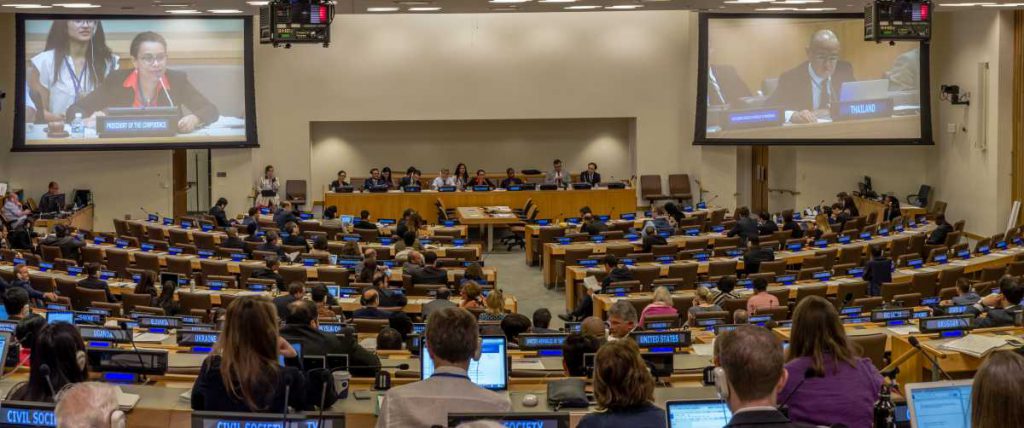
The Treaty on the Prohibition of Nuclear Weapons (TPNW) marks a turning point in the long history of the effort to reduce nuclear risks and to eventually eliminate the 13,000 nuclear weapons that remain today, 90 percent of which are held by the United States and Russia. On Oct. 24, Honduras became the 50th country to ratify the treaty, triggering its entry into force 90 days later, on Jan. 22, 2021.
That date will mark the first time since the invention of the atomic bomb that nuclear weapons development, production, possession, use, threat of use, and stationing of another country’s nuclear weapons on a state party’s national territory are all expressly prohibited in a global treaty. The TPNW’s entry into force will arrive almost exactly 75 years after the United Nations General Assembly’s (UNGA’s) adoption, on Jan. 24, 1946, of its very first resolution, Resolution 1 (I), which was to establish a commission to ensure “the elimination from national armaments of atomic weapons and all other major weapons adaptable to mass destruction.”
Japan rejects nuclear ban treaty; survivors to keep pushing
“Atomic bomb survivors, who have long worked to achieve the treaty, renewed their call for Japan to become a signatory. Terumi Tanaka, a survivor of the Aug. 9, 1945, Nagasaki bombing who has long campaigned for a nuclear weapons ban, said he has not given up hope.”
BY: Mari Yamaguchi The Associated Press | apnews.com

TOKYO – Japan said Monday it will not sign a U.N. treaty that bans nuclear weapons and does not welcome its entry into force next year, rejecting the wishes of atomic bomb survivors in Japan who are urging the government to join and work for a nuclear-free world.
The United Nations confirmed Saturday that 50 countries have ratified the Treaty on the Prohibition of Nuclear Weapons, paving the way for its entry into force in 90 days.
The announcement was hailed by anti-nuclear activists, but the treaty has been strongly opposed by the United States and other major nuclear powers.
Deregulation of Rad Waste Disposal Plows Ahead
Decommissioned Reactors OK-ed for Landfills in Big Gift to Nuclear Industry
By: Jeff Ruch & Kirsten Stade | peer.org
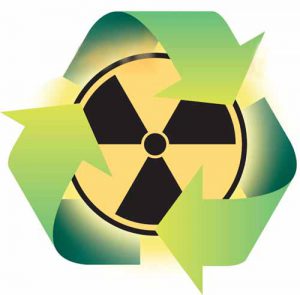 Washington, DC —The Nuclear Regulatory Commission is finalizing a year-long drive to functionally deregulate disposal of massive amounts of radioactive waste. NRC’s plan would allow commercial nuclear reactors to dump virtually all their radioactive waste, except spent fuel, in local garbage landfills, which are designed for household trash not rad-waste, according to comments filed today by Public Employees for Environmental Responsibility (PEER).
Washington, DC —The Nuclear Regulatory Commission is finalizing a year-long drive to functionally deregulate disposal of massive amounts of radioactive waste. NRC’s plan would allow commercial nuclear reactors to dump virtually all their radioactive waste, except spent fuel, in local garbage landfills, which are designed for household trash not rad-waste, according to comments filed today by Public Employees for Environmental Responsibility (PEER).
Today marks the end of public comments for an NRC “interpretative rulemaking” that would, in effect, abrogate longstanding requirements that virtually all such waste must be disposed of in licensed radioactive waste sites meeting detailed safety standards and subject to NRC inspection and enforcement. Instead, NRC would grant generic exemptions for unlicensed waste handlers.
NRC declares its “intent” that these newly exempt disposal sites would be limited to “very low-level radioactive wastes” – a term undefined by statute – which NRC considers to be “below 25 millirem per year.” Yet, NRC’s definition would allow public exposure to the equivalent to more than 900 chest X-rays over a lifetime, create a cancer risk twenty times higher than the Environmental Protection Agency’s acceptable risk range, thousands of times the risk goal for Superfund sites, or enough radiation to cause every 500th person exposed to get cancer.
The Poisonous Legacy of Portsmouth’s Gaseous Diffusion Plant
The plant was erected in Pike County, Ohio during the cold war to enrich uranium. Then people started getting sick. Now, they’re stuck cleaning up the mess.
By: Kevin Williams | beltmag.com
Vina Colley, a slight woman with a bob of thick blond hair, climbs into her white Ford Explorer. Her thirteen-year-old Maltese, Hercules jumps onto her lap, wedging comfortably between her legs and the steering wheel, and stays put as she navigates the steep ridges and plunging hollows of Pike County, Ohio. Colley is seventy-four, and, for nearly forty years, she’s been fighting the Portsmouth Gaseous Diffusion Plant, known locally as “The A-Plant” or PORTS. Her home library holds scores of totes filled with neatly labeled documents, a paper trail that exposes what she sees as Portsmouth’s darkest and most egregious secrets.
Nuclear weapons have always been inhumane and unacceptable, soon they will be illegal – Tilman Ruff
“The radioactive incineration unleashed by nuclear war involving even less than 1% of the global nuclear arsenal targeted on cities in one part of the world would be followed by a worldwide nuclear ice age and nuclear famine, putting billions of people’s lives in jeopardy.”
On Saturday 24 October 2020, Honduras brought the number of nations ratifying the United Nations Treaty on the Prohibition of Nuclear Weapons (‘TPNW’) to 50. This milestone means that after 90 days have elapsed, on 22 January 2021, the treaty will enter into legal force, becoming international law and binding on the states that have ratified it, and all those which ratify in future. The treaty will, however, stigmatise nuclear weapons for all states, whether or not they join the treaty.
It is fitting that 24 October also marked the 75th anniversary of the founding of the UN, ‘determined to save succeeding generations from the scourge of war’. The very first resolution of the UN General Assembly, on 24 January 1946, established a commission to develop a plan for the elimination of atomic weapons.
This is a historic achievement and an enormous win for humanity and planetary health. Outlawing nuclear weapons is an essential step towards eliminating them, which is the only reliable way to prevent their use.
Reports: Japan to Release Fukushima’s Contaminated Water Into Sea
“The disposal of contaminated water at the Fukushima Daiichi plant has been a longstanding problem for Japan as it proceeds with an decades-long decommissioning project. Nearly 1.2 million tonnes of contaminated water are currently stored in huge tanks at the facility.”
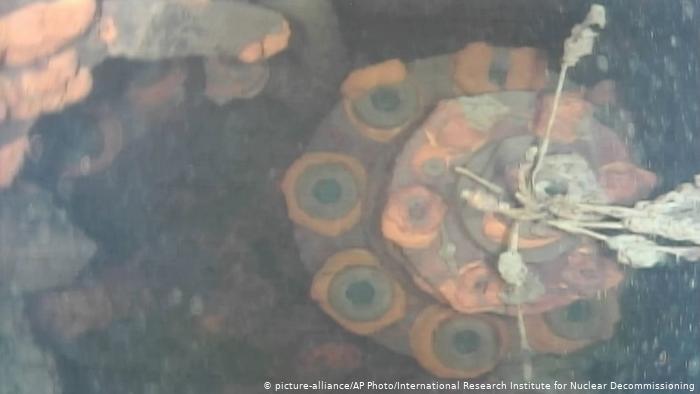
BY: Yuka Obayashi and Kaori Kaneko, Reuters | readersupportednews.com
Nearly a decade after the Fukushima nuclear disaster, Japan’s government has decided to release over one million tonnes of contaminated water into the sea, media reports said on Friday, with a formal announcement expected to be made later this month.
The decision is expected to rankle neighbouring countries like South Korea, which has already stepped up radiation tests of food from Japan, and further devastate the fishing industry in Fukushima that has battled against such a move for years.
Is Change Coming? Smartly Reshaping and Strengthening America’s Nuclear Deterrent
“Adjusting U.S. nuclear weapons plans is notoriously difficult, as nearly every president has experienced. Yet it is urgent to halt and reverse the trend of increasing nuclear capabilities that lower the threshold for nuclear war and increase miscalculation risks.”
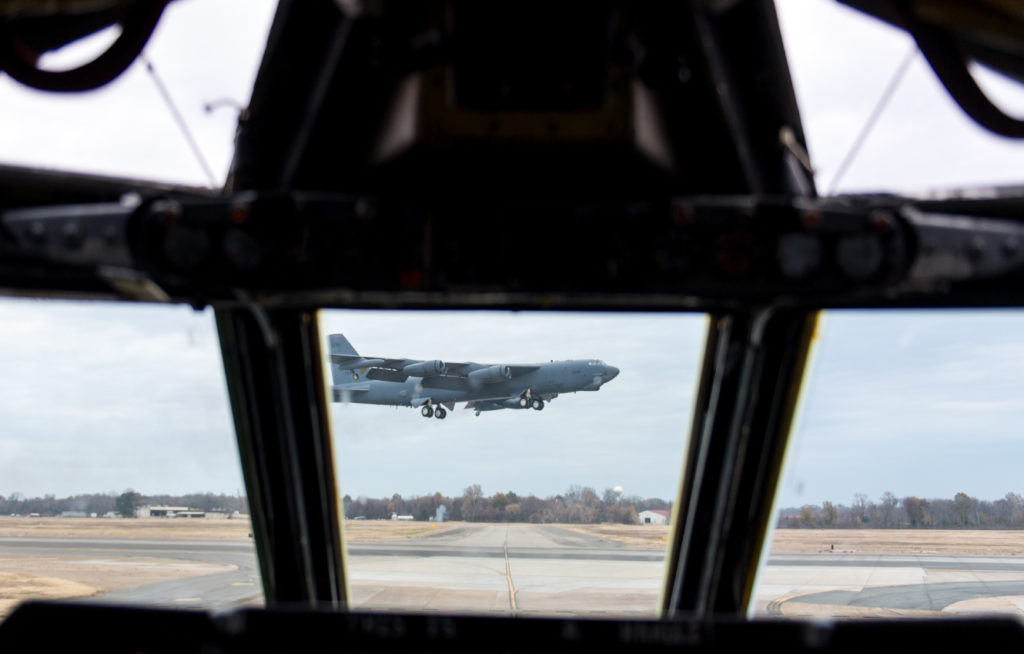
BY: CHRISTINE PARTHEMORE AND ANDY WEBER | warontherocks.com
How might America’s nuclear weapons plans change in the years ahead? Buoyed by the revelation of President Donald Trump describing a potential secret new nuclear weapon system to Bob Woodward, continuing U.S.-Russian dialogue on nuclear weapons, and the upcoming November elections, experts are speculating about what the next four years may mean for U.S. nuclear policy.
Former Vice President Joe Biden has indicated that, if elected, he would seek a posture aligned with his stated belief “that the sole purpose of the U.S. nuclear arsenal should be deterring — and, if necessary retaliating against — a nuclear attack.” This would be a pivot from Trump’s 2018 Nuclear Posture Review, which elevated the role of nuclear weapons in U.S. defense planning by, among other things, describing America’s nuclear forces as a hedge against large-scale conventional attacks and strategic cyber attacks. The declaratory shift — along with elevation of so-called low-yield nuclear options that are considered more usable, and support for more dual conventional and nuclear systems that could be indistinguishable in the absence of verification measures — increased concern that the Trump administration viewed nuclear weapons as acceptable for warfighting, not just deterrence.
Trump Thought He Had a Nuclear Deal With Putin. Not So Fast, Russia Said.
Trump administration officials want to broaden the New START accord and warn that the price of a new deal will rise after the election. Joe Biden supports a straight five-year extension of the deal.
BY: David E. Sanger and Andrew E. Kramer | nytimes.com
President Trump had a pre-election plan to show he had gotten something out of his mysteriously friendly relationship with President Vladimir V. Putin of Russia.
In the weeks before the election, the two men would announce that they had reached an agreement in principle to extend New START, the last remaining major arms control agreement between the two countries. It expires on Feb. 5, two weeks after the next presidential inauguration.
Mr. Trump has long refused to sign off on a clean five-year extension of the agreement, a step both leaders could take without Senate approval. He has described the Obama-era treaty as deeply flawed — the same thing he said about the North American Free Trade Agreement and the Iran nuclear accord — because it did not cover all of Russia’s nuclear arms, or any of China’s.
The Biggest Radioactive Spill in US History Never Ended
How the US poisoned Navajo Nation.
BY: Ranjani Chakraborty and Melissa Hirsch | vox.com
For decades, Navajo Nation was a primary source for the United States’ uranium stockpile during the nuclear arms race. It was home to more than 700 uranium mines, which provided jobs to Navajo residents. But the mining industry came with impending peril. Cases of lung cancer and other diseases began cropping up in a community that had previously had few of them. Land, air, and water was poisoned. And on July 16, 1979, the mining led to the biggest radioactive spill in US history.
Scoping Comments on the LLNL SWEIS
October 21, 2020
Ms. Fana Gebeyehu-Houston
NEPA Document Manager
National Nuclear Security Administration
Lawrence Livermore National Laboratory
P.O. Box 808, L-293, Livermore, CA 94551-0808
By Email to:LLNLSWEIS@nnsa.doe.gov
Re: Scoping Comments on the LLNL SWEIS
Dear NEPA Document Manager:
I appreciate this opportunity to submit comments on the scope of the National Nuclear Security Administration’s (NNSA) Site-Wide Environmental Impact Statement (SWEIS) for the continued operation of the Lawrence Livermore National Laboratory (LLNL) Main Site in Livermore, CA and Site 300 high explosives testing range near Tracy, CA.
Nuclear Watch New Mexico is a nonprofit watchdog organization based in Santa Fe, New Mexico. We seek to promote safety and environmental protection at nuclear facilities; mission diversification away from nuclear weapons programs; greater accountability and cleanup in the nation-wide nuclear weapons complex; and consistent U.S. leadership toward a world free of nuclear weapons.
Pursuant to the National Environmental Policy Act the purpose of scoping is: “early identification of concerns, potential impacts, relevant effects of past actions and possible alternative actions.” Therefore, I ask that the analyses I am requesting be fully undertaken – and my questions fully answered – in the draft SWEIS.
First, I am skeptical of the timing of the initiation of this new SWEIS for LLNL during the COVID-19 pandemic and just before the November 3 election. As a prerequisite, the
National Nuclear Security Administration (NNSA) should have already begun a nationwide programmatic environmental impact statement (PEIS) on expanded plutonium pit
production which would then inform the LLNL SWEIS of the Livermore Lab’s role in that national effort, which is not insignificant. Following that pit production PEIS, both a
LLNL and Los Alamos National Laboratory SWEIS should proceed in parallel. It is particularly striking that NNSA is claiming NEPA compliance while relying on an
outdated Complex Transformation Supplemental PEIS and LANL SWEIS, both completed in 2008, and refusing to prepare new or supplemental ones.
How Kodak Exposed The Atomic Bomb
Simulation of a Nuclear Blast in a Major City
WIPP gets millions in COVID-19 relief funding, operations contract extended for one year
“Are WIPP workers getting infected at the site and taking it back into the communities?” Don Hancock said. “WIPP is clearly not always a safe place, but we don’t know if WIPP is a place where workers get infected or if infected workers brought it to WIPP.”
BY: ADRIANE HEDDEN | currentargus.com
In August and September, the Waste Isolation Pilot Plant received about $3.8 million per month of federal COVID-19 funding as the U.S. Department of Energy elected to renew the facility’s primary contractor for one year despite an option to keep Nuclear Waste Partnership (NWP) at the helm of the nuclear waste repository until 2022.
NWP spokesman Donavan Mager said the site received $3.816 million in August and $3.803 in September and that the funding was designated to “support operations” although he did not elaborate on how, specifically, the public money was to be spent.
Per the latest reports from WIPP, 39 workers had contracted COVID-19 as the pandemic appeared to pose a resurgence in New Mexico in recent weeks.
Delegates Want Open Meeting on Release of Radioactive Vapors at LANL
The public will get a chance to comment and learn more about Los Alamos National Laboratory’s plans to release radioactive vapors into the atmosphere from several barrels of tritium-tainted waste.
BY: SCOTT WYLAND | santafenewmexican.com
The federal agency that oversees the lab scheduled the meeting for Oct. 20 after three New Mexico delegates — U.S. Sens. Tom Udall and Martin Heinrich and U.S. Rep. Ben Ray Luján — wrote a letter calling for more transparency and public participation.
An open forum on the release of vapors from Cold War waste is especially important for Pueblo people and others who live near the site, the delegates said in the letter to the National Nuclear Security Administration.
“We strongly believe that protecting public health and safety must always be the highest priority at Los Alamos,” they wrote in the Oct. 1 letter. “Safety is particularly important when there is a possibility of a release to the environment involving radioactive or hazardous materials.”
The agency has said ventilating the containers is necessary to relieve built-up radioactive hydrogen in their headspace, so they can be safely handled and shipped to a commercial storage site.
Continue reading
Indigenous Peoples’ Day 2020




Today, on Indigenous People’s Day 2020, we join our friends and speakers from indigenous rights and environmental groups from throughout the US in condemning nuclear colonialism. From uranium mining, milling, and processing, to atomic power and nuclear weapons, to radioactive waste – the resulting environmental injustices have disproportionately impacted Native Americans & other indigenous peoples.
 Sarah Fields, Uranium Watch and Sierra Club Nuclear-Free CampaignLas Vegas, NV — Indigenous rights and environmental advocates from throughout the US condemned nuclear colonialism on what is recognized as “Columbus Day” Tuesday, October 11, 2016. Native Community Action Council held a press conference in front of the Thomas and Mac Moot Court at the Boyd Law School on the campus of UNLV for participants in the Native American Forum on Nuclear Issues at UNLV.
Sarah Fields, Uranium Watch and Sierra Club Nuclear-Free CampaignLas Vegas, NV — Indigenous rights and environmental advocates from throughout the US condemned nuclear colonialism on what is recognized as “Columbus Day” Tuesday, October 11, 2016. Native Community Action Council held a press conference in front of the Thomas and Mac Moot Court at the Boyd Law School on the campus of UNLV for participants in the Native American Forum on Nuclear Issues at UNLV.
LANL’s Waste Storage Poses Dangers, Report Says
Defense Nuclear Facilities Safety Board (DNFSB) Report demonstrates beyond doubt that a FULL programmatic environmental impact statement on expanded plutonium pit production is needed, as well as new site-wide EIS for the Los Alamos Lab.
The 760 rem estimate is equal to 380,000 chest X-rays, said Dan Hirsch, retired director of programs on environment and nuclear policy at the University of California, Santa Cruz. “This is vastly above what’s permissible for workers’ exposure,” Hirsch said, adding that far lower doses can cause cancer.
BY: SCOTT WYLAND | santafenewmexican.com
Los Alamos National Laboratory is storing hundreds, maybe thousands, of barrels of radioactive waste mixed with incompatible chemicals that have the potential to cause an explosion , putting workers and the public at risk, a government watchdog said in a report.
LANL personnel have failed to analyze chemicals present in hundreds of containers of transuranic nuclear waste, making it possible for an incompatible chemical to be mixed in and cause a container to burst, the Defense Nuclear Facilities Safety Board said in a September report.
Such an explosion would release radiation in doses lethal to workers and hazardous to the public, the safety board said. And yet the radiation levels that would be released have not been sufficiently estimated, it said.
Some of LANL’s facilities store radioactive waste without any engineered controls or safeguards beyond the containers, the board wrote in a cover letter addressed to the U.S. Department of Energy.
25-Year Study of Nuclear vs Renewables Says One Is Clearly Better at Cutting Emissions
Nuclear power is often promoted as one of the best ways to reduce our reliance on fossil fuels to generate the electricity we need, but new research suggests that going all-in on renewables such as wind and solar might be a better approach to seriously reducing the levels of carbon dioxide in the atmosphere.
BY: DAVID NIELD| sciencealert.com
Based on an analysis of 123 countries over a quarter of a century, the adoption of nuclear power did not achieve the significant reduction in national carbon emissions that renewables did – and in some developing nations, nuclear programmes actually pushed carbon emissions higher.
The study also finds that nuclear power and renewable power don’t mix well when they’re tried together: they tend to crowd each other out, locking in energy infrastructure that’s specific to their mode of power production.
Given nuclear isn’t exactly zero carbon, it risks setting nations on a path of relatively higher emissions than if they went straight to renewables.
Virtual Public Information Session on FTWC venting at Los Alamos National Laboratory – 5 p.m. on Tuesday, Oct. 20
The public information session will be hosted via Webex; people who wish to attend can join by following this link (meeting password GckhzZ5nv33), or call in by phone at 415-527-5035, access code 199 995 9074 if people do not have internet access.
Media Advisory
CONTACT: Peter Hyde, pahyde@lanl.gov
LOS ALAMOS, N.M., Oct. 8, 2020—The National Nuclear Security Administration is hosting a virtual public information session at 5 p.m. on Tuesday, Oct. 20, to inform the public about the process of venting Flanged Tritium Waste Containers (FTWCs) that are located at Los Alamos National Laboratory.
Flanged Tritium Waste Containers are pressure vessels specifically designed to contain waste metal that has been exposed to tritium. As the tritium ages and separates into helium and hydrogen, those gases can create pressure inside the container. This is expected and accounted for in the design.
To reduce the amount of waste stored on site, Los Alamos National Laboratory will ship the containers off-site to a licensed storage facility. In order to ship the containers, the pressurized gases inside the containers must be vented to meet regulatory requirements of the U.S. Department of Transportation (DOT).
Citizens’ Hearing Held at New Mexico Capitol about Increased Plutonium Pit Production at LANL
The Department of Energy (DOE) has approved its plans to increase plutonium pit production at Los Alamos National Laboratory (LANL) by 50 percent as a way to comply with what is described in the 2018 Nuclear Posture Review as a need for “an effective, responsive, and resilient nuclear weapons infrastructure” that can “adapt flexibly to shifting requirements.”
The Pentagon has stated it needs annual production of 80 plutonium pits, the triggers for nuclear weapons. The DOE has approved its Supplement Analyses for four possible ways to execute this upgrade.
Continue reading
NASA’s clean-up plan for tainted Santa Susana Field Lab near Simi outrages activists
“NASA’s absurd excuse for cleaning up so much less contamination than it promised is that it has discovered there is much more contamination at the site than it had previously realized,” — cleanup activist Dan Hirsch, president of the Committee to Bridge the Gap
BY: Mike Harris | Ventura County Star vcstar.com
NASA has decided to clean up contaminated soil at its portion of the Santa Susana Field Laboratory site to a less stringent standard than it agreed to in a 2010 legally binding agreement with the state.
The federal agency announced its decision last week, outraging cleanup activists and some local officials.
The activists say NASA’s planned cleanup, outlined in a formal Record of Decision, would leave 84% of its contaminated acres not remediated at the site outside Simi Valley.
That would violate a 2010 legally binding agreement — formally called an Administrative Order on Consent — NASA signed with the California Department of Toxic Substances Control to clean up its acres “to background,” the most exacting standard.
WIPP Resumes Nuclear Waste Shipments from California National Laboratory
Nuclear waste shipments to the Waste Isolation Pilot Plant near Carlsbad from Lawrence Livermore National Laboratory (LLNL) near San Francisco, California resumed this month after a 10-year pause.
BY: ADRIANE HEDDEN | currentargus.com
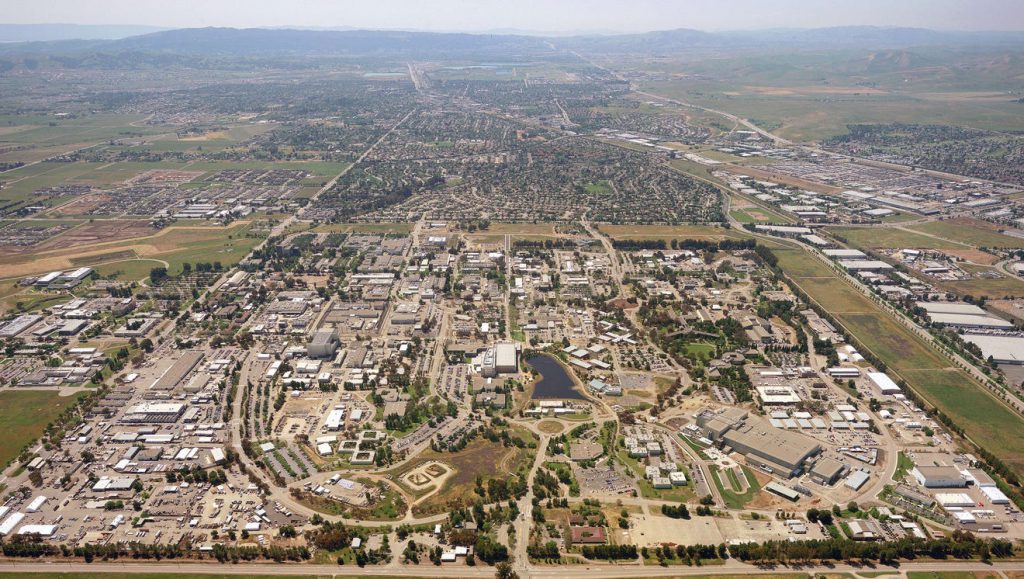
The waste was received at WIPP and will be permanently disposed of in the underground repository about 2,000 feet beneath the surface.
The resumption of shipments from LLNL was the result of a multi-year project and collaboration between the Department of Energy’s Carlsbad Field Office (CBFO), WIPP contractor Nuclear Waste Partnership, National Nuclear Security Administration (NNSA) and the NNSA’s Livermore Field Office, read a DOE news release.
LLNL is primarily a research laboratory that generates transuranic (TRU) waste during its research and engineering operations related to nuclear weapons, plutonium and other technological aspects of the DOE’s nuclear complex.
Texas Gov. Greg Abbott joins opposition to nuclear waste project in New Mexico
“The proposed sites in Texas and New Mexico do not provide the deep geologic isolation required for permanent storage in order to minimize the risks of accidents, terrorism or sabotage which could disrupt the country’s energy supply with catastrophic effects on the American economy,” Abbott wrote to the president.
BY: ADRIANE HEDDEN | currentargus.com
Republican Texas Gov. Greg Abbott was the latest public official to oppose a proposed nuclear storage facility to be built near Carlsbad and Hobbs, along with another in West Texas.
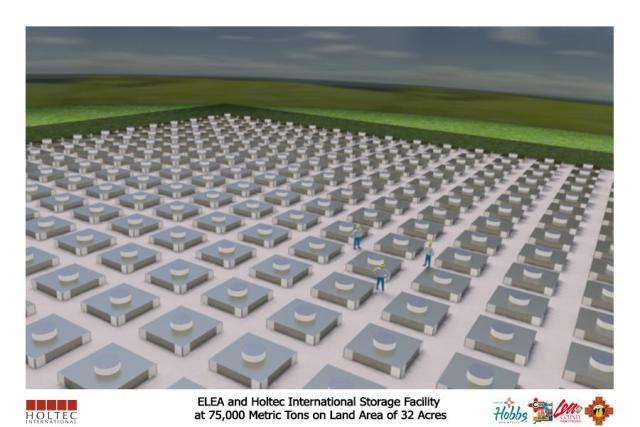
In a Sept. 30 letter to President Donald Trump, Abbott wrote that he worried locating high-level nuclear waste facilities in the Permian Basin region could put the U.S.’s most active oil and gas field at risk.
Holtec International proposed building a consolidated interims storage facility (CISF) to hold spent nuclear fuel rods temporarily in southeast New Mexico while a permanent repository — as required by federal law — was developed.
Activists Decry Feds’ Plans to Ramp Up Nuclear Work at LANL
The federal government should not turn Los Alamos National Laboratory into a hub for making nuclear bomb cores and instead should spend the money to assist the state with education, health care, poverty and climate change impacts, a group of activists and concerned residents said Wednesday at the state Capitol.
BY: SCOTT WYLAND | santafenewmexican.com
The nonprofit Los Alamos Study Group, which supports nuclear disarmament, set up a sound system outside the deserted Roundhouse so critics could express their ire about plans for LANL to produce 30 warhead triggers a year by 2026 without a sitewide environmental study.
The comments, recorded as if the event were a public hearing, will be sent to New Mexico’s congressional delegates, including Sens. Martin Heinrich and Tom Udall, who support LANL reviving and expanding plutonium pit production, saying it will boost the regional economy and strengthen national security.
World’s Biggest Wind and Solar Producer Now Worth More than ExxonMobil
“The shift is as significant as the one the world has seen in the auto industry, with electric vehicle maker Tesla overtaking the biggest car companies in the world in the last year, to the point where it is now valued at more than the next five biggest global car makers combined, despite producing just a fraction of the number of cars.”
BY: GILES PARKINSON | reneweconomy.com
In yet another sign of the pace of the global energy transition – and the massive switch taking place in the investment community – the market value of company that describes itself as the world’s biggest producer of wind and solar power, US utility NextEra, has overtaken that of what used to be the world’s most valuable company, oil major ExxonMobil.
The flip occurred last last week, when NextEra overtook ExxonMobil to become the largest energy company in the US by market value. As Forbes reported, an investment in NextEra a decade ago would have delivered to return of 600 per cent, while an investment in ExxonMobil would have returned minus 25 per cent.
Nuclear Disarmament tops UN agenda
3 Oct 2020 – The United Nations General Assembly holds a high-level meeting to commemorate the International Day for the Total Elimination of Nuclear Weapons. Because of the COVID-19 pandemic, many leaders speak by pre-recorded video to call for a nuclear-weapon-free world.
U.N. Nuclear Ban Treaty Likely to Enter Into Force Early Next Year
“The only way to completely eliminate nuclear risk is to completely eliminate nuclear weapons” and that the nuclear ban treaty “remains the cornerstone of the nuclear disarmament and nonproliferation regime,” Guterres said at a meeting of the General Assembly on Friday.
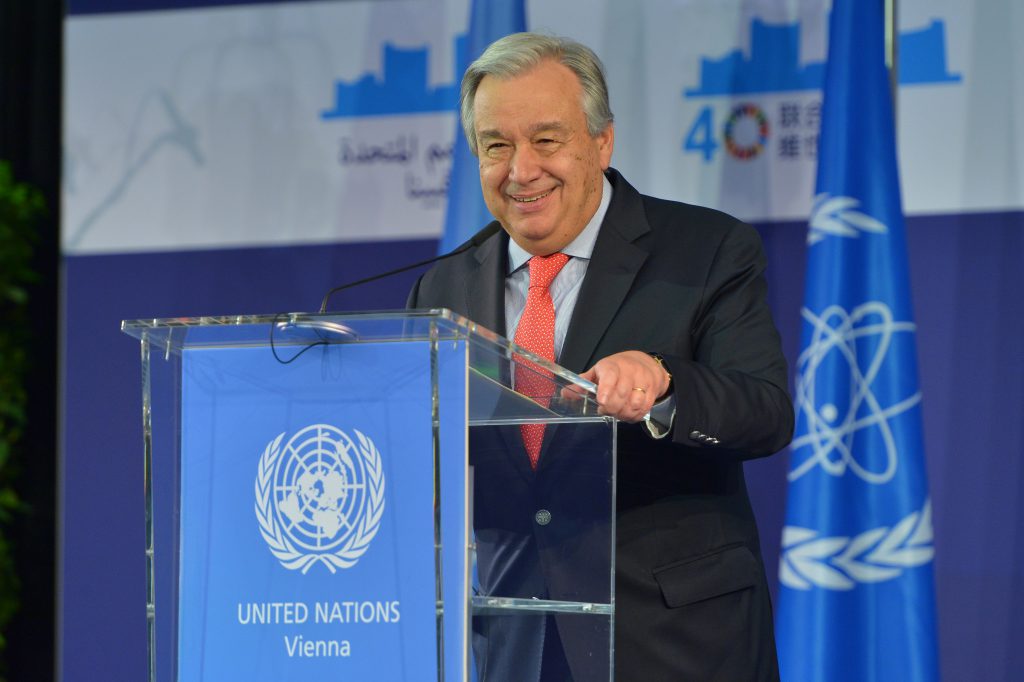
NEW YORK/UNITED NATIONS – A U.N.-adopted nuclear ban treaty is likely to enter into force early next year as the number of signatories is anticipated to reach the needed threshold of 50 soon, possibly later this month, a diplomatic source said Friday.
According to the source and the International Campaign to Abolish Nuclear Weapons (ICAN), 46 countries and regions have completed ratification procedures.
The Treaty on the Prohibition of Nuclear Weapons, adopted in 2017, will enter into force 90 days after it has been ratified by at least 50 countries and regions.
At least four additional countries have already notified the United Nations of their intention to ratify the treaty, the source and the nonprofit organization said, without revealing the names of any such signatories.
Nuclear Ban Pact Should Not Erode Validity of NPT: Confab Chief
Noting that the current international security environment “is not very positive,” [Gustavo Zlauvinen, President-designate of the 2020 Review Conference for the Nuclear Nonproliferation Treaty (NPT)] said a lack of progress on nuclear disarmament will likely “play a big role, unfortunately” at the forthcoming NPT review conference.
By: KYODO NEWS | kyodonews.com
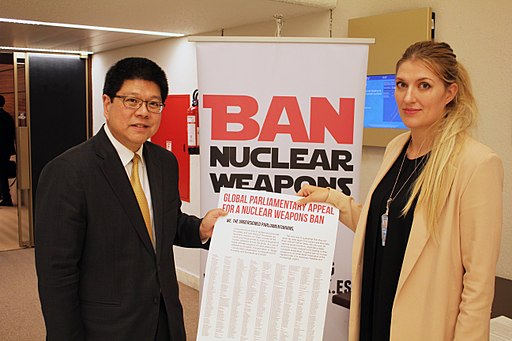
Questioning the effectiveness of a U.N.-adopted nuclear ban treaty, which involves no nuclear powers, the president-designate of an upcoming nonproliferation conference has stressed that the pact should not be allowed to undermine the legitimacy of the Nuclear Non-Proliferation Treaty.
“You can’t have nuclear disarmament without the nuclear weapon states in that system. And that’s why, for the time being, the only treaty that has been accepted by at least five nuclear weapon states, that includes obligations on nuclear disarmament, is the NPT,” Gustavo Zlauvinen said in a recent exclusive interview with Kyodo News.
There is a “huge difference” between the NPT and the pact, Zlauvinen said, adding that it is necessary to make distinctions between the two treaties and “try not to erode the validity and the legitimacy of the NPT.”
He also noted that some members of the NPT are opposed to any reference to the nuclear ban pact at the review conference to be convened early next year and indicated that a wide gap between nuclear power states and those pushing for the nuclear ban treaty could be an “issue of contention” at the NPT gathering.
State Public Land Commissioner Speaks Out Against Nuclear Waste Facility
SANTA FE, N.M. (KRQE) – The state Public Lands Commissioner is speaking out against a proposed nuclear waste storage facility in Lea County. In comments submitted to the National Regulatory Commission, Commissioner Stephanie Garcia Richard says that Holtec International ignored concerns about storing nuclear waste in a highly active oil field.
BY: KRQE Staff | krqe.com
Read Garcia Richard’s full comment and submission to U.S. Nuclear Regulatory Commission
Commissioner Garcia Richard’s released the following statement in a news release Monday regarding the public comment:
I remain vehemently opposed to this proposal for reasons stated since I took office in January 2019. Holtec has misrepresented themselves and this project through every step of the process, including recently raising the intended number of nuclear canisters from 500 to 10,000. They have misrepresented their purported control of the site while also lying about their ability to restrict oil and gas operations in the area.
Holtec has ignored numerous safety concerns regarding the transportation of high-level nuclear waste through New Mexico communities, as well as failing to address questions about storing such waste in the middle of a highly active oil field. As Commissioner of Public Lands, I have a constitutional obligation to protect state trust land for future generations. This project comes with far too much risk and little to no reward.
Activists Push Congress to Revive Probe Into Links Between Nuclear Plants and Cancer
“Nuclear Regulatory Commission killed study in 2015 after spending five years and $1.5 million on the effort”
BY: TERI SFORZA | ocregister.com
Scientists and activists were stunned back in 2015 when the Nuclear Regulatory Commission pulled the plug on what was designed to be the best study of cancer near nuclear power plants ever done.
The pilot study’s price tag was $8 million — a pittance in the NRC’s $1 billion budget — and five years of work had already gone into it. But it was killed because officials were convinced it would be too costly and couldn’t link reactors to disease, a Southern California News Group investigation found.
Last week, a petition with some 1,200 signatures demanding that the study resume went to members of Congress representing Southern and Central California.
Texas Governor Urges Trump To Oppose Nuclear Waste Plans
“It’s an unusual thing for environmentalists and oil companies to be on the same page, and we are on this issue,” says an Austin-based environmental advocate.
BY: Travis Bubenik, Courthouse News; | texasstandard.com

A view of an existing site in West Texas where a company wants to store highly radioactive waste from the nation’s nuclear power plants, one of two such proposals the Texas governor now says he opposes.
From Courthouse News Service:
Texas Governor Greg Abbott has come out against two rival plans to ship highly radioactive waste from the nation’s nuclear power plants to sites on the Texas-New Mexico border, saying either plan would be unsafe and would threaten the region’s sprawling Permian Basin oilfield.
“A stable oil and gas industry is essential to the economy, and crucial to the security of our great nation,” Abbott, a Republican, wrote in a letter to President Donald Trump on Wednesday. “Allowing the interim storage of spent nuclear fuel and high-level nuclear waste at sites near the largest producing oilfield in the world will compromise the safety of the region.”
The nuclear waste plans have for years drawn the ire of advocacy groups who worry about a range of possible environmental and safety threats, but oil and gas interests have become increasingly involved in the fight as well.
A coalition of oil companies and West Texas landowners called Protect the Basin was launched in 2018 to oppose the plans and has more recently stepped up its outreach. One of the coalition members, a ranching and oil company tied to one of the nation’s richest families, has been involved in fighting the issue all the way up to the D.C. Circuit.
Two’s a crowd: Nuclear and renewables don’t mix
“If countries want to lower emissions as substantially, rapidly and cost-effectively as possible, they should prioritize support for renewables, rather than nuclear power.”
BY: University of Sussex | techxplore.com
That’s the finding of new analysis of 123 countries over 25 years by the University of Sussex Business School and the ISM International School of Management which reveals that nuclear energy programs around the world tend not to deliver sufficient carbon emission reductions and so should not be considered an effective low carbon energy source.
Researchers found that unlike renewables, countries around the world with larger scale national nuclear attachments do not tend to show significantly lower carbon emissions—and in poorer countries nuclear programs actually tend to associate with relatively higher emissions.
U.S., Russia Move Toward Outline of Nuclear Deal, Administration Says
“Trump administration official’s comments suggest the two sides might be able to come to terms on broad principles”
BY: MICHAEL R. GORDON | wsj.com
 U.S. and Russian negotiators made progress Monday on a new framework accord that would freeze each side’s nuclear arsenal and outline the parameters for a detailed treaty that would be negotiated next year, a senior Trump administration official said.
U.S. and Russian negotiators made progress Monday on a new framework accord that would freeze each side’s nuclear arsenal and outline the parameters for a detailed treaty that would be negotiated next year, a senior Trump administration official said.
The accord, if it comes together in the coming month, would give each side something it has sought. President Trump would have a demonstration that his diplomacy toward Moscow has borne fruit, arriving before the November election. Russia would get an extension of the New START…
The Day Nuclear War Almost Broke Out
“In the nearly sixty years since the Cuban missile crisis, the story of near-catastrophe has only grown more complicated. What lessons can we draw from such a close call?”
“…what almost no one knew until four decades later—was that one of B-59’s torpedoes was carrying what the Soviets called “special ammunition.” The “special” part was a fifteen-kiloton nuclear warhead. Had Savitsky’s orders been carried out, chances are good that the Americans would have responded in kind, and a full-scale nuclear war would have broken out. There should, it seems, be a useful lesson to be learned from that frantic afternoon. But what, in God’s name, is it?”
BY: ELIZABETH KOLBERT | newyorker.com
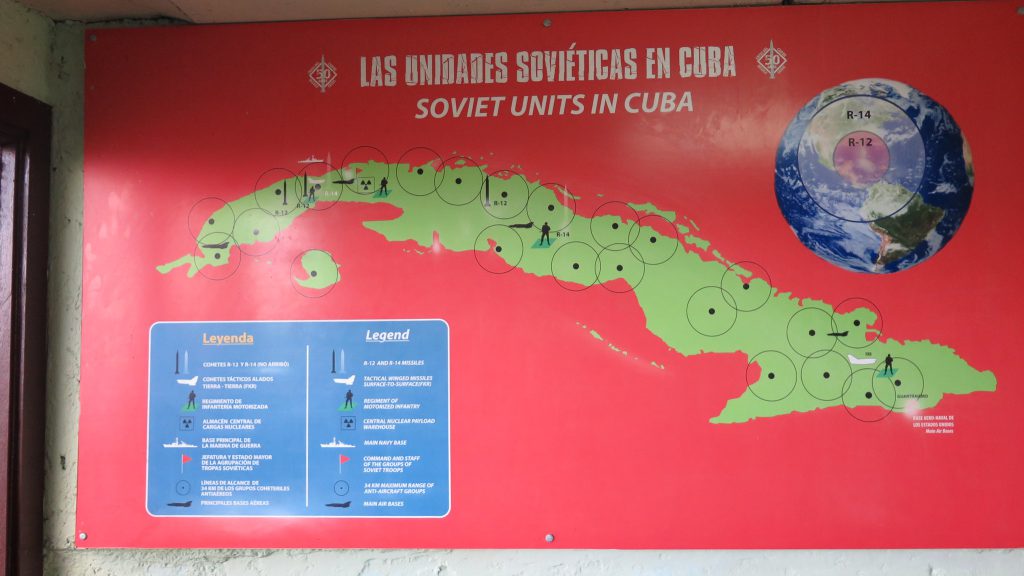
On October 27, 1962, a day that’s been described as the “most dangerous” in human history, a Soviet submarine designated B-59 was churning through the Sargasso Sea when suddenly it was rocked by a series of explosions. “It felt like you were sitting in a metal barrel, which somebody is constantly blasting with a sledgehammer,” Vadim Orlov, a communications specialist on board the sub, later recalled. “The situation was quite unusual, if not to say shocking, for the crew.”
Four weeks earlier, B-59 had been dispatched from the U.S.S.R. with three other so-called F-class subs as part of Operation Anadyr, Nikita Khrushchev’s top-secret effort to install ballistic missiles in Cuba. (The Anadyr is a river that flows into the Bering Sea; the code name was intended to make even soldiers participating in the operation believe they were headed somewhere cold.) Pretty much from the outset of the voyage, things had not gone well.
“For the sailors, this Cuban missile crisis started even before its beginning,” Ryurik Ketov, the captain of another Cuba-bound sub, once observed. The Atlantic that October was turbulent, and the pitching sea made it tough for the boats to maintain their desired speed.
“You have to hold on to something even in your sleep, or else you’ll fall off,” a crew member complained. Communications, too, were difficult. Once past Iceland, the subs had trouble contacting Moscow; for a while, according to Ketov, the only voices audible over the radio “were those of Murmansk fishermen.”
US, Russia to hold latest nuclear arms talks in Finland
“The Finnish president’s office says the United States and Russia will hold a round of nuclear arms control talks in Finland’s capital, Helsinki, on Monday to follow up on negotiations in Austria this summer”
By: Associated Press | abcnews.com
HELSINKI — The United States and Russia will hold a round of nuclear arms control talks in the Finland’s capital, Helsinki, on Monday to follow up on negotiations in Austria this summer, the Finnish president’s office said.
“The round of discussions on strategic stability and nuclear weapons between the United States and Russia, which began in Vienna in the summer, will continue in Helsinki on Monday,” the office of the Finnish President Sauli Niinisto said in a brief statement late Sunday.
The office said nuclear arms negotiators from Washington and Moscow met a previous time in Finland in 2017.
“Finland welcomes the negotiators, this time (U.S.) Ambassador (Marshall) Billingslea and (Russian) Deputy Foreign Minister (Sergei) Ryabkov,” the statement said, adding that Niinisto would meet both representatives after the talks.
Revival of Renewables Sought in Debate Over Nuclear Bailout
“Most of the effects of the law at the heart of a $60 million Statehouse bribery scandal are set to take effect Jan. 1. The law generally creates or expands consumer-fueled subsidies for legacy nuclear and coal-fired power plants in Ohio and offsets those costs by rolling back and eliminating existing surcharges designed to create markets for renewable sources like wind and solar and reduce energy consumption overall.”
By: Jim Provance | limaohio.com
COLUMBUS — EDP Renewables North America, the world’s fourth-largest wind developer, invested more than $700 million into projects in Paulding and Hardin counties when Ohio first rolled out the red carpet.
But more recent signals from the state — including last year’s passage of the $1 billion bailout of two nuclear plants — have convinced the company to look elsewhere for its future investments.
“HB 6 created a false dichotomy — that Ohio must sacrifice a clean-energy future at the expense of its energy past,” Erin Bowser, EDP’s director of project management, on Wednesday told a House of Representatives select committee now considering repealing House Bill 6.
Nuclear Power: A Gargantuan Threat
“But if we are truly to have a world free of the horrific threat of nuclear arms, the goal needs to be more. A world free of the other side of the nuclear coin – nuclear power –is also necessary. Radical? Yes, but consider the even more radical alternative: a world where many nations will be able to have nuclear weapons because they have nuclear technology. And the world continuing to try using carrots and sticks to try to stop nuclear proliferation — juggling on the road to nuclear catastrophe.”
By: KARL GROSSMAN | independentaustralia.net

At the start of 2020, Bulletin of the Atomic Scientists moved its Doomsday Clock to 100 seconds to midnight — the closest to midnight, doomsday, since the clock started in 1947.
There are two gargantuan threats — the climate crisis and nuclear weapons/nuclear power.
The only realistic way to secure a future for the world without nuclear war is for the entire planet to become a nuclear-free zone — no nuclear weapons, no nuclear power. A nuclear-free Earth.
How did India get an atomic bomb in 1974? Canada supplied a reactor and the U.S. Atomic Energy Commission provided heavy water for it under the U.S. so-called “Atoms for Peace” program. From the reactor, India got the plutonium for its first nuclear weapon.
Any nation with a nuclear facility can use plutonium produced in it to construct nuclear arms.
Nuclear News Archives – 2019
Iran launches more advanced machines to speed up nuclear enrichment: official
Tehran has rejected the Trump administration’s demand that a a new deal imposing stricter limits on its nuclear capacity as well as curbs on its ballistic missile programme and on its regional behaviour.
ARTICLE BY PARISA HAFEZI | reuters.com

DUBAI (Reuters) – Iran said on Monday it had launched a new batch of advanced centrifuges to accelerate uranium enrichment, further reducing compliance with the 2015 nuclear deal following the withdrawal of its arch-foe the United States. Iran has gradually shed commitments made under the deal with world powers since being hit with renewed U.S. sanctions that have crippled its oil exports. Germany said on Monday Iran’s announced roll-out of modernised centrifuges jeopardises the accord and called on Tehran to return to it.
Responding to Washington’s “maximum pressure” campaign, Iran has bypassed the restrictions of the deal step-by-step – including by breaching both its cap on stockpiled enriched uranium and on the level of enrichment.
Tehran, however, has left room for diplomacy by saying that talks are possible if Washington lifts all the sanctions and itself returns to the nuclear deal.
“If they (Washington) return to their commitments, we also will go back to our commitments,” Salehi said, adding that “Iran is ready to fully implement the deal if its rights are respected”.
What Does Science Say About the Need for Nuclear? Not Necessary.
ARTICLE BY JESSICA MCDONALD | factcheck.org
Ryan Jones, an expert in electricity systems and a co-founder of Evolved Energy Research, a consulting company that models low-carbon transitions, agreed. “Anyone who says that nuclear is 100% necessary on a technical basis, I would claim, just hasn’t looked at the alternatives in enough detail,” he said in an email.
Most experts FactCheck.org contacted, including those who think nuclear power should remain an option, said that from a technical perspective, nuclear is not needed to decarbonize the grid.
The Air Force Has Stopped Using 8-Inch Floppy Disks for Missile Command
The US nuclear forces’ Dr. Strangelove-era messaging system finally got rid of its floppy disks
BY: VALERIE INSINNA | c4isrnet.com
OFFUTT AIR FORCE BASE, Neb. — In 2014, “60 Minutes” made famous the 8-inch floppy disks used by one antiquated Air Force computer system that, in a crisis, could receive an order from the president to launch nuclear missiles from silos across the United States.

But no more. At long last, that system, the Strategic Automated Command and Control System or SACCS, has dumped the floppy disk, moving to a “highly secure solid state digital storage solution” this past June, said Lt. Col. Jason Rossi, commander of the Air Force’s 595th Strategic Communications Squadron.
The communication system which keeps the president in touch with the nuclear triad during a crisis will now be the responsibility of the head of U.S. Strategic Command.
Russia test-fires missile from new nuclear-powered submarine
Russia has successfully test-fired an intercontinental ballistic missile from its latest nuclear-powered submarine, the country’s defence ministry says.
BY: JONATHAN MARCUS | bbc.com
Footage captured overnight shows the release of the so-called Bulava missile from an underwater position in the White Sea, the ministry said.
It was fired from Russia’s new Prince Vladimir submarine and was reported to have travelled thousands of kilometres.
The submarine is expected to be operational by the end of the year.
Completed in the early hours of Thursday, the Bulava missile launch – the first of its kind from the Prince Vladimir – was one of many weapons tests expected to take place in the coming weeks.
Senate Dems likely to block defense spending in border wall dispute
ARTICLE BY JOE GOULD | defensenews.com
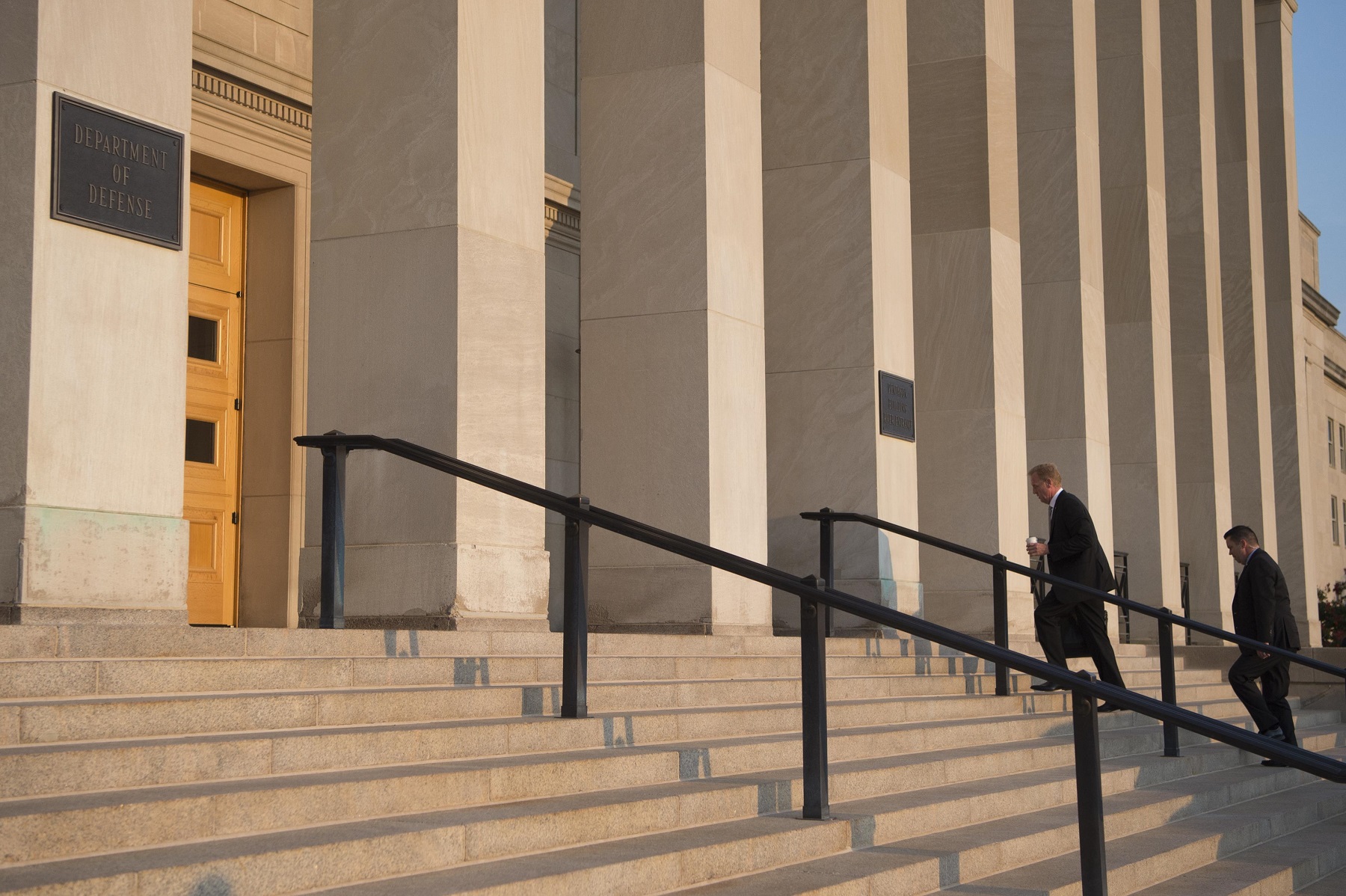
WASHINGTON ― Key Senate Democrats signaled Monday their caucus is likely to filibuster a proposed 2020 defense spending bill, which Senate Republican leaders plan to offer for a vote this week.In a Senate floor speech Monday, Majority Leader Mitch McConnell, R-Ky., dared Democrats to hold up the bill, accusing them of blocking a troop pay raise “for the sake of picking a fight with the White House,” even after the raid that killed Islamic State leader Abu Bakr al-Baghdadi.
October 29 This week on Press the Button: Chairman Adam Smith of the House Armed Services Committee. His remarks on the future of U.S. nuclear policy at the National Press Club last week made the news when he said that it was very unlikely major policy provisions would survive conference, particularly on the new, more usable nuclear weapon.
Hear his comments directly in a special edition of Press the Button called “The Chairman’s Choice.”
Geoff Wilson of Council for a Livable World discusses this surprise development with Michelle Dover and Mary Kaszynski of Ploughshares Fund on Early Warning.
Listen, Subscribe and Share on iTunes · Spotify · SoundCloud · YouTube · Google Play · Sticher
Also available on ploughshares.org/pressthebutton
The most radioactive state
Who will be the ultimate bearer of the nation’s nuclear waste?
In Mashable’s series Wasted, reporters dig into the myriad ways we’re trashing our planet. Because it’s time to sober up.
WRITTEN BY MARK KAUFMAN | .Jun 26, 2021 mashable.com
Of all the states in the union, and to the certain dismay of many local residents, New Mexico presently has the potential to become the future bearer of more and more of the nation’s nuclear excesses.
Though New Mexico will resist, and may prevail. “Folks in New Mexico are not going to take it,” said Albuquerque resident Don Hancock, who is the director of the Nuclear Waste Safety program at the Southwest Research and Information Center, an advocacy group focused on environmental and social justice. “We’ll stop this.”
“New Mexicans should not have to tolerate this risk.”
A SKINNY NDAA
Top Armed Services leaders in both houses of Congress are considering passing a slimmed-down National Defense Authorization Act that defers controversial measures for the sake of getting something passed, our colleague Connor O’Brien writes.
“It’s amounted to a backup plan,” House Armed Services Chairman Adam Smith (D-Wash.) told POLITICO, referring to the “skinny NDAA.” “It’s amounted to, we’re going to keep working on the bill itself, try to get resolved the top drawer issue of the [border] wall and we’ll have this as a backup discussion if necessary. I don’t have a problem with that.”
CHECKING TRUMP: More than 40 advocacy groups are out with a letter calling on lawmakers to oppose a final defense bill that doesn’t include the “core progressive priorities” aimed at constraining the Trump administration in the House-passed bill. That includes provisions to limit Trump’s Iran war powers, end U.S. support to the Saudi-UAE coalition in Yemen, bar new detainees at Guantanamo Bay, protect transgender troops and block deployment of new low-yield nuclear warheads.
October 22 Congressman Gerry Connolly (D-VA) gives us an insider view of the impeachment crisis and its impact on US foreign policy. Connolly serves on the Foreign Affairs and the Oversight Committees, both charged with the impeachment inquiry.
Early Warning features Joe Cirincione and Elizabeth Beavers discussing the Turkish president’s recent comments on nuclear weapons, and why we should keep the Open Skies Treaty. Joe Cirincione answers a question from Alec in Louisiana.
Listen, Subscribe and Share on iTunes · Spotify · SoundCloud · YouTube · Google Play · Sticher
Also available on ploughshares.org/pressthebutton
 Calling the National Nuclear Security Administration's latest Record of Decision (Federal Register, October 4, 2019) for the Continued Operation of the Y-12 National Security Complex , "an obvious attempt by the government to deliberately circumvent this Court's ruling," the Oak Ridge Environmental Peace Alliance, Nuclear Watch New Mexico, the Natural Resources Defense Council and four individual co-plaintiffs today filed a Motion to Enforce the judgment handed down in federal court in September by Chief United States District Judge Pamela Reeves.
Calling the National Nuclear Security Administration's latest Record of Decision (Federal Register, October 4, 2019) for the Continued Operation of the Y-12 National Security Complex , "an obvious attempt by the government to deliberately circumvent this Court's ruling," the Oak Ridge Environmental Peace Alliance, Nuclear Watch New Mexico, the Natural Resources Defense Council and four individual co-plaintiffs today filed a Motion to Enforce the judgment handed down in federal court in September by Chief United States District Judge Pamela Reeves.
"Within hours of the Judge's September ruling, NNSA told reporters that it would keep right on doing what it was doing, including building the UPF bomb plant. Then they published the new Record of Decision which is a direct challenge to the Court—it says they have decided they will comply with the Court's order at some uncertain date in the future, and in the meantime, it's business as usual. We went to court in the first place, because 'business as usual' was violating the law." — OREPA coordinator Ralph Hutchison
Erdogan’s Ambitions Go Beyond Syria. He Says He Wants Nuclear Weapons.
“There are approximately 50 US nuclear weapons, stored on Turkish soil. The United States had never openly acknowledged its existence, until Wednesday, when Trump did exactly that. When asked about the safety of these weapons, stored in a bunker controlled by the Americans at Incirlik Air Base, Mr. Trump said, “We have confidence and we have a large air base there, a very powerful air base.” But not everyone is so confident, because the air base belongs to the Turkish government. If relations with Turkey deteriorate, US access to that base is not guaranteed.”
ARTICLE BY DAVID E. SANGER & WILLIAM J. BROAD | nytimes.com

Erdogan is playing before an anti-American domestic audience with his nuclear rhetoric, but he is very unlikely to look for nuclear weapons,,quot; said Jessica C. Varnum, an expert in Turkey at the James Martin Center for Nonproliferation Studies in Middlebury in Monterey, California, “There would be huge economic and reputational costs for Turkey, which would damage the pockets of Erdogan voters.”
A Cheaper Nuclear Sponge
“With today’s technology, land-based [ballistic] missiles are an embarrassment,” the late, great strategist Thomas Schelling wrote in 1987. The weapons, he added, “seem to give the entire deterrent a bad name.”
ARTICLE BY STEVE FETTER & KINGSTON REIF | warontherocks.com
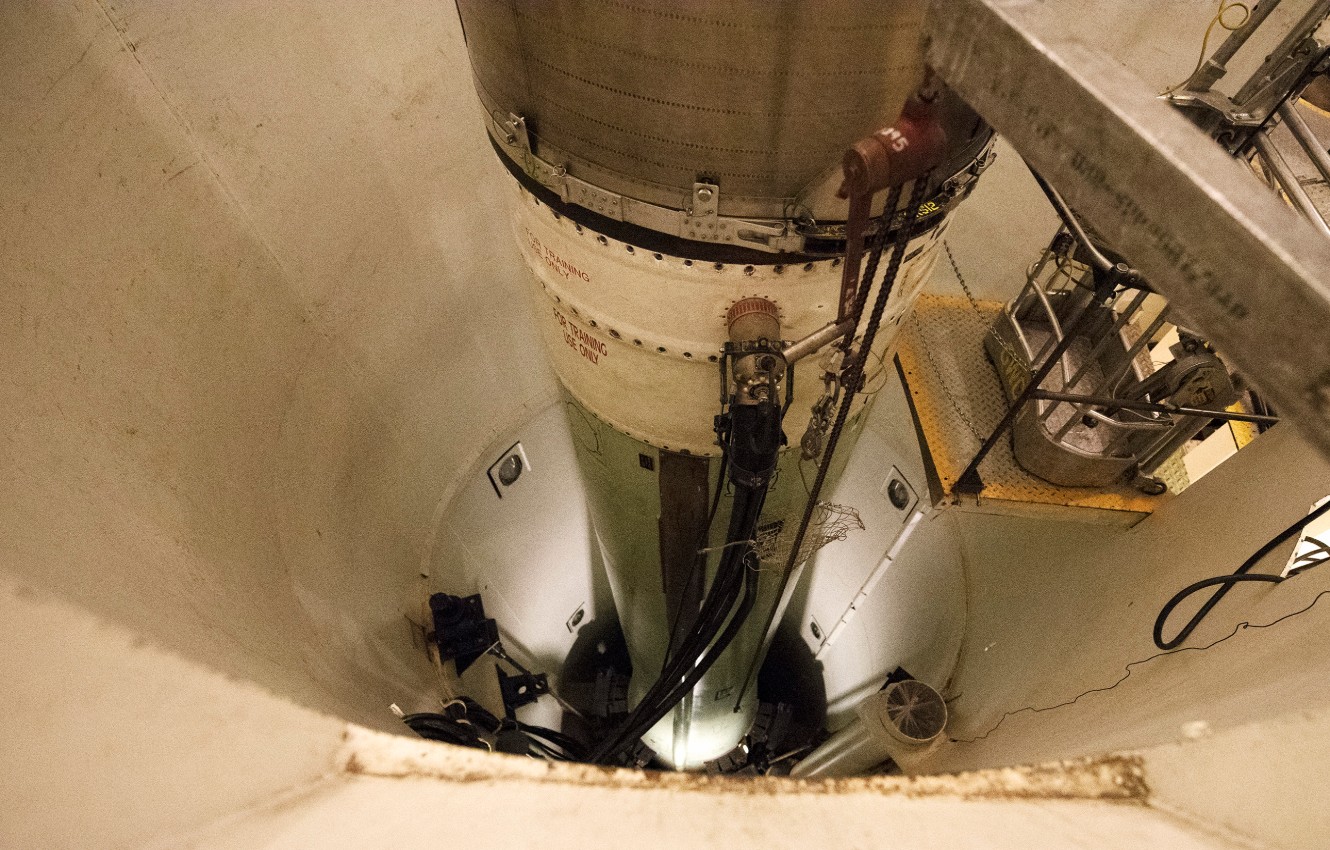
Schelling was right: Intercontinental ballistic missiles (ICBMs) are by far the least valuable leg of the so-called nuclear triad, which also consists of submarine-launched ballistic missiles, and air-delivered cruise missiles and gravity bombs.
So long as U.S. adversaries possess nuclear weapons, we believe the United States should maintain a safe, secure, and effective nuclear arsenal to deter nuclear attacks against itself and its allies. But the Trump administration’s approach to sustaining and upgrading the arsenal is unnecessary, unsustainable, and unsafe. Nowhere is this more evident than with respect to its plan to build a new ICBM.
Instead of proceeding with current plans to build an entirely new ICBM system at a cost that is likely to exceed $100 billion, the Pentagon could save scores of billions — without sacrificing U.S. security — by continuing to rely on a smaller number of existing Minuteman III missiles.
Trump administration talking tough about another government shutdown for border wall funding
On Thursday, the Senate failed a veto override on Donald Trump’s emergency declaration, which is being used to purloin funds appropriated for other programs and use them for his border wall. That sets up yet another budget fight that will simmer along between the House, Senate, and White House for the next month. It also sets up another fight over a Trump government shutdown.
ARTICLE BY JOAN MCCARTER | dailykos.com
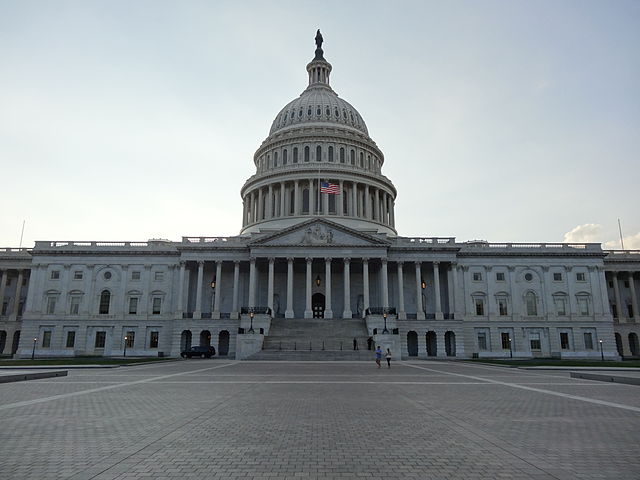 Before the August recess, all parties agreed to a continuing resolution to fund the government until the week before Thanksgiving, in anticipation that all the individual spending bills for all the departments would be passed and signed by then. What it really set up was another fight with Trump. “Trump is not interested in signing other domestic spending bills until there is agreement on the border wall,” a senior administration official told The Washington Post.
Before the August recess, all parties agreed to a continuing resolution to fund the government until the week before Thanksgiving, in anticipation that all the individual spending bills for all the departments would be passed and signed by then. What it really set up was another fight with Trump. “Trump is not interested in signing other domestic spending bills until there is agreement on the border wall,” a senior administration official told The Washington Post.
Feds give Navajo uranium contract to firm with sketchy past
A High Country News investigation finds the EPA awarded Tetra Tech a contract despite knowing its subsidiary had likely engaged in data manipulation, false reporting and profiteering.
ARTICLE BY SUSIE NIELSEN | hcn.org
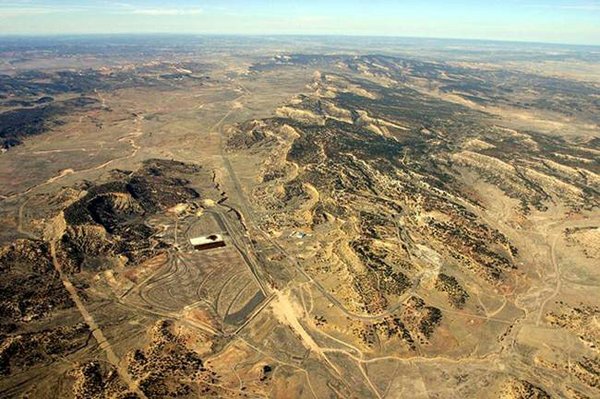
In September 2017, the Environmental Protection Agency received a troubling message from the Navy: Tetra Tech EC, the firm tasked with cleaning up the radioactive former naval shipyard Hunters Point in San Francisco, might have manipulated its data.
The past performance of Tetra Tech, even beyond its subsidiary at Hunters Point, has been marked by controversy. The parent company has been at the center of other lawsuits, including a consolidated case regarding its involvement in cleaning up after the North Bay Fires, a series of wildfires that devastated regions north of San Francisco in the fall of 2017.
“The Navajo Nation project is a bull’s-eye radioactive project with dangerous radioactivity. For Tetra Tech to get that project at all — to be even allowed to bid on it — is shocking.” – David Anton, attorney for the Tetra Tech EC whistleblowers
In 2008, the EPA and five other federal agencies, in consultation with Navajo Nation, developed the first comprehensive plan to address the legacy of uranium contamination in and around the Navajo Nation. As of 2014, of the 43 highest-priority Navajo Nation mines as designated by the EPA, only one of them — the Skyline Mine — had been mostly cleaned up.
Energy Secretary Rick Perry To Resign
NPR ALL THINGS CONSIDERED JEFF BRADY | npr.org Updated at 6:30 p.m. ET
Secretary of Energy Rick Perry plans to leave his position at the end of the year, President Trump confirmed to reporters Thursday in Fort Worth, Texas. Trump praised Perry and said he already has a replacement in mind.
“Rick has done a fantastic job,” Trump said. ” But it was time.”
Trump said that Perry’s resignation didn’t come as a surprise and that he has considered leaving for six months because “he’s got some very big plans.”
Perry, 69, is one of Trump’s original Cabinet members and recently has emerged as a central figure in the impeachment inquiry of Trump.
Urgent: Move US Nuclear Weapons Out Of Turkey
BLOG BY HANS M. KRISTENSEN | fas.org

Should the U.S. Air Force withdraw the roughly 50 B61 nuclear bombs it stores at the Incirlik Air Base in Turkey? The question has come to a head after Turkey’s invasion of Syria, Erdogan’s increasingly authoritarian leadership and deepening discord with NATO, Trump’s inability to manage U.S. security interests in Europe and the Middle East, and war-torn Syria only a few hundred miles from the largest U.S. nuclear weapons storage site in Europe.
The US is rethinking the 50-plus nuclear weapons it keeps in Turkey
“The US is storing perhaps 50 air-dropped thermonuclear bombs at its Incirlik Airbase in southern Turkey, less than 100 miles from the Syrian border where this conflict is taking place.”
BY: TIM FERNHOLZ | qz.com
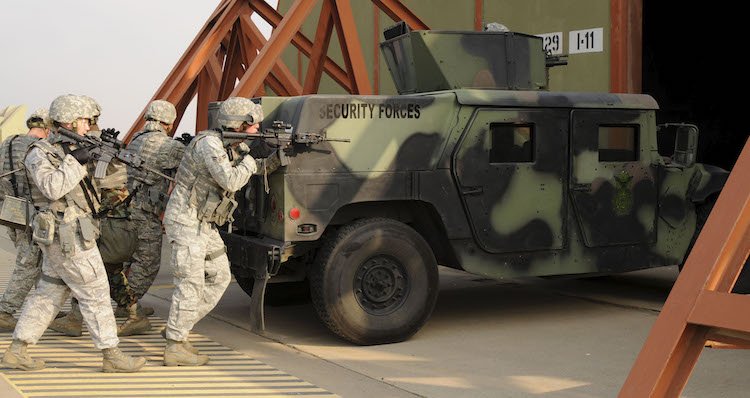
Turkish forces are pushing into northern Syria, replacing and sometimes even firing on the US troops retreating at Donald Trump’s orders.
The question of whether Turkey, a member of the North Atlantic Treaty Organization, is really a US ally was put to US defense secretary Mark Esper on Fox television this morning. “No, I think Turkey, the arc of their behavior over the past several years has been terrible,” he said.
The nuclear stockpile dates back to the Cold War, when the US sought to keep a sufficient supply of atomic weapons deployed in Europe to deter potential Soviet aggression. Belgium, the Netherlands, Germany, and Italy also host similar arsenals, and the US trains the participating nations in the use of the doomsday devices.
Turkey Troubles
October 15 Heather Hurlburt, director of the New Models of Policy Change project at New America’s Political Reform program, joins Michelle Dover for a discussion on US national security and foreign policy under President Donald Trump. She is the co-author of The Consensual Straitjacket: Four Decades of Women in Nuclear Security.
News analysis with Michelle Dover, John Carl Baker and Geoff Wilson of Council for a Livable World focuses on the Trump administration’s decision to withdraw US troops from the Turkey-Syria border. Joe Cirincione answers a question from Johnny from Massachusetts.
Listen, Subscribe and Share on iTunes · Spotify · SoundCloud · YouTube · Google Play · Sticher
Also available on ploughshares.org/pressthebutton
Even a limited nuclear war between India and Pakistan could induce nuclear winter, thereby potentially killing 100’s of millions beyond South Asia.
From study: “Rapidly expanding nuclear arsenals in Pakistan and India portend regional and global catastrophe”
What if We Nuke a City?
“The world has changed in the past few years with world leaders again explicitly and publicly threatening each other with nuclear weapons. Many experts think the danger of a nuclear strike is higher than it has been in decades.
Governments tell their citizens that it’s good that we have nuclear weapons, but bad when others have them; that it’s somehow necessary to threaten others with mass destruction to keep us safe. But does this make you feel you feel safe? It only takes a small group of people in power to go crazy or rouge, a small misstep or simple misunderstanding to release a catastrophe of unimaginable proportions.”
Kurzgesagt – In a Nutshell
Video Description: “Until we did the research. It turned out we were a bit oblivious off the real impact of nuclear weapons in the real world, on a real city. And especially, how helpless even the most developed nations on earth would be if an attack occurred today. So hopefully this video demonstrates how extremely non fun a real world nuclear attack would be, without being too gruesome.”
DOE Order 140.1: DNFSB Response, Oct. 11
Chair Hamilton responds, “Pursuant to our enabling legislation, we have directed our staff to attend all phases of the NES study process. Should you wish to prohibit our access to a particular study, we respectfully request written communication to the Board.”
[NES = the nuclear explosive safety (NES) elements of DOE O 452.1E, Nuclear Explosive and Weapon Surety Program]
Oct. 11, 2019
The Honorable James Richard Perry Secretary of Energy
U.S. Department of Energy
1000 Independence Avenue, SW Washington, DC 20585-1000
Dear Secretary Perry:
We have received NNSA’s response dated August 9, 2019, concerning Board access to all phases of the nuclear explosive safety study process. We respectfully disagree with the justification offered for continued exclusion of our staff from NES study deliberations. NNSA’s response notes deliberations as collaborative efforts where participants consider all sides of identified issues, requiring free and open communication. Our staff’s observation of this interaction provides them with an understanding of the bases of the safety decisions being taken.
Today is Indigenous People’s Day, a holiday to honor and celebrate Native American and Indigenous peoples.
Among the many injustices suffered by native communities in the centuries that have passed since Europeans arrived on North America’s shores and claimed it for their own is the dangerous and deadly exposure to the radioactive materials used to create nuclear weapons. The United States’ nuclear arsenal has taken an especially hard toll on the Navajo, who continue to live with the repercussions of nuclear mining even today.
BACKGROUND
EXCERPT FROM POST BY CASSANDRA VARAKA, POLICY DIRECTOR OF WAND |
The process of building nuclear weapons starts with mining. One of the main elements of a nuclear bomb is enriched uranium. Some of the world’s richest uranium deposits span across Arizona, New Mexico, and Utah — heavily overlapping with the Navajo Nation. These mines provided the uranium used in the Manhattan Project; the United States’ top-secret endeavor to build the first nuclear bombs. Between 1944 and 1986 mining companies blasted 4 million tons of uranium out of Navajo land. Until 1971, uranium from these mines was sold exclusively to the United States government. Many Navajo were employed in the uranium mines and exposed to unsafe conditions by the companies in employing them. The mining companies knew that mine workers were at heightened risk for developing lung cancer and other serious respiratory diseases in 15 or 20 years. Additionally, the mines operated in a way that contaminated the surrounding lands and water by leaving large piles of radioactive materials exposed.
Many Navajo continue to live in close proximity to contaminated uranium mines. Of the 523 abandoned mines, the Environmental Protection Agency has only successfully cleaned up nine. The legacy of these mines and the contamination they leached into the environment on the Navajo Nation has been devastating: the cancer rate on the reservation doubled from the early 1970’s to the late 1990’s, even as the cancer rate declined nationwide. Each and every day, minority populations like the Navajo continue to be unduly affected by the militaristic pursuits of our government. For the Navajo, that means generations of health problems in the name of our nuclear weapons. We owe it to them, and to all the marginalized communities harmed by our pursuit and maintenance of nuclear weapons, to highlight the price they have been forced to pay for our nuclear arsenal.
READ MORE
When Talking About the Climate Crisis, We Can’t Forget About Nuclear Weapons
Both are existential threats, but only one is getting the attention it deserves.
BY: MATT KORDA | thenation.com
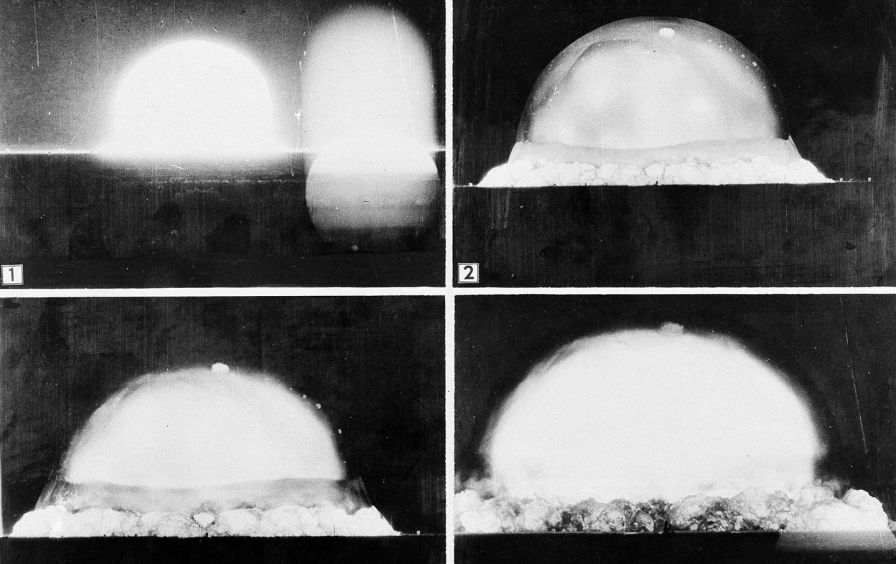
“The current attention gap between the climate crisis and nuclear weapons is bizarre, given their common existential stakes and challenges. Climate change and nuclear weapons have a symbiotic relationship: Each threat exacerbates the other. Climate change is setting the stage for conflict between nuclear-armed states, and a recent study suggests that even a regional nuclear war would cool the planet by 2 to 5 degrees Celsius and cause mass starvation for over a decade. Not to mention the fact that even during peacetime, decades of uranium mining, nuclear testing, and nuclear waste dumping have contaminated some of our planet’s ecosystems beyond repair, displacing entire communities—often communities of color—in the process.
The flip side of this symbiosis, however, means that climate change and nuclear weapons also share a common solution. A progressive nuclear policy should be based upon four core principles of the Green New Deal—international cooperation, reductions, transparency, and justice. Only by challenging the nuclear-industrial complex in its entirety—in a way akin to how the Green New Deal challenges the carbon economy in its entirety—can a progressive nuclear policy pull us back from the brink of atomic and environmental catastrophe. Progressive climate change policies should include demilitarization and disarmament provisions, and progressive nuclear policies should address the climate and humanitarian impacts of nuclear weapons. Similarly, nuclear activists and climate change activists are natural allies in the fight against existential risk, and both causes would benefit from a more robust partnership.
To that end, the significant attention imbalance between climate change and nuclear weapons must be urgently corrected; keeping them siloed reinforces an incomplete narrative about the nature of these existential threats.
US, critics split on whether tech made nuke shipments safer
“There’s enough high-level nuclear waste awaiting disposal in the U.S. to fill a football field 65 feet (20 meters) deep. Few states want to house it within their borders.”
“The public defines ‘safe’ as zero risk…the technical community defines ‘safe’ as complying with regulatory standards.” – Robert Halstead, head of the Agency for Nuclear Projects, is currently fighting plutonium shipments to Nevada and spent nuclear fuel transfers to the proposed Yucca Mountain dump.
BY: SCOTT SONNER | phys.org
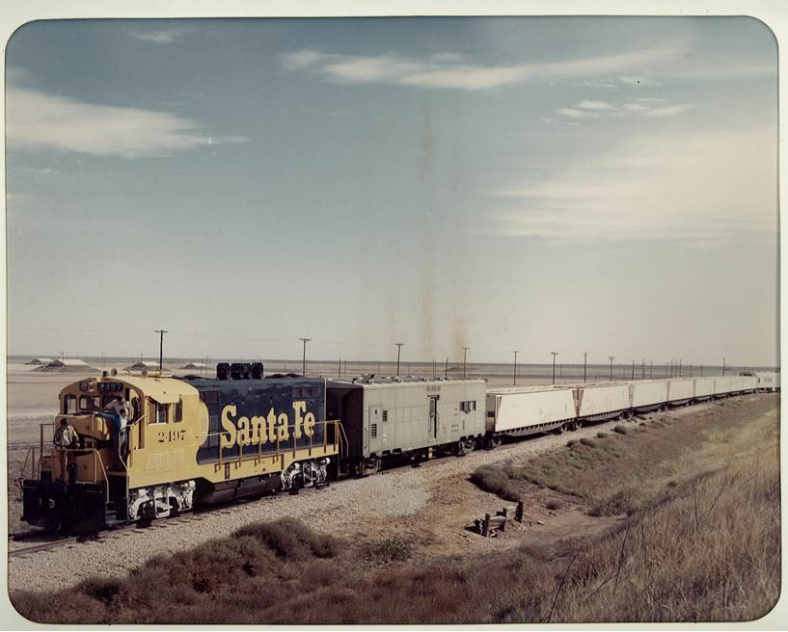
The plutonium core for the first atomic weapon detonated in 1945 was taken from Los Alamos National Laboratory to a test site in the New Mexico desert in the backseat of a U.S. Army sedan.
Officials put other bomb parts inside a metal container, packed it into a wooden crate and secured it in the steel bed of a truck under a tarp, the U.S. Energy Department’s National Nuclear Security Administration says in a historical account.
Grainy black-and-white photos show special agents and armed military police accompanying the shipment nearly 75 years ago.
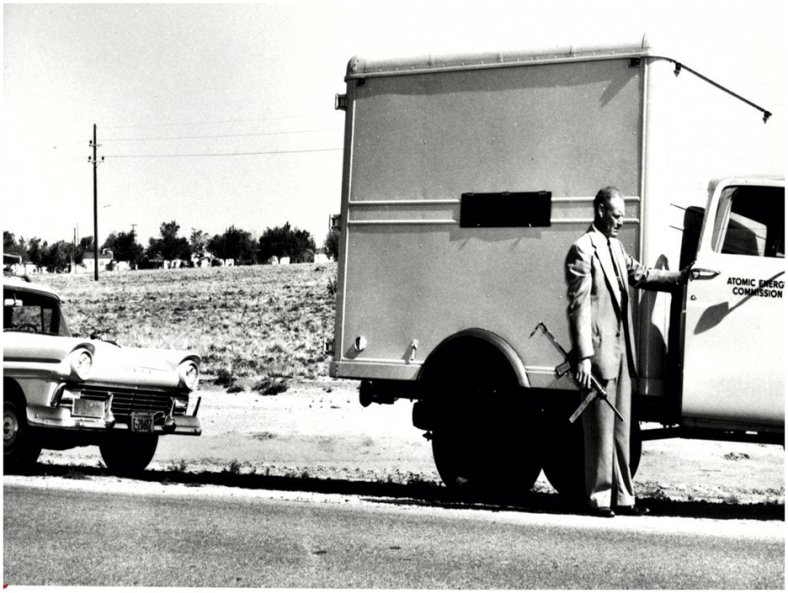
“Nuclear materials transportation has evolved since then,” the department posted online last year.
Today, radioactive shipments are hauled in double-walled steel containers inside specialized trailers that undergo extensive testing and are tracked by GPS and real-time apps.
But whether shipping technology has evolved enough to be deemed safe depends on whom you ask.
New research: Regional nuclear war will cause catastrophic global consequences
Two scientific studies modelling the effects of nuclear war released in the past few weeks have revealed some terrifying figures:
- 91.5 million deaths in a matter of hours, if nuclear conflict breaks out between the United States and Russia,
- 125 million deaths in case of a week-long conflict between India and Pakistan using 100 kilotonne nuclear warheads,
- A 30% reduction in surface sunlight due to the 36 teragrams of black carbon released into the atmosphere after the India-Pakistan conflict,
- Two billion people at risk of famine.
The two studies, Princeton’s Science and Global Security programme “Plan A” [ 1] and Science Advances’ Rapidly expanding nuclear arsenals in Pakistan and India portend regional and global catastrophe [ 2], show that there is no such thing as a contained nuclear conflict.
These are not farfetched scenarios. This new research comes out as tensions are increasing between India and Pakistan, and four of the nine nuclear-armed states have tested nuclear missiles in just the past two weeks. [3, 4] You can read more about this new research here.
The science is clear: we need to eliminate nuclear weapons, before they are used again.
Feds move to demolish 13 structures at toxic Santa Susana site without state oversight
BY: MIKE HARRIS | vcstar.com
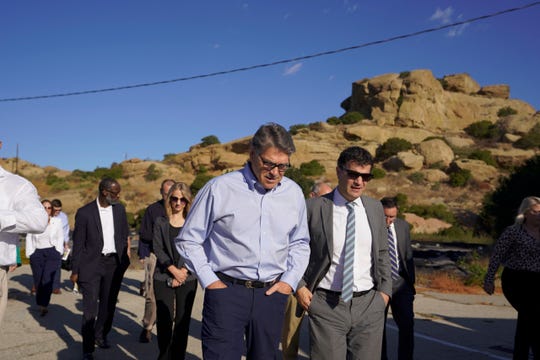
The U.S. Department of Energy announced this week it has decided to demolish and remove, without state oversight, 13 of 18 remaining structures from its portion of the contaminated Santa Susana Field Laboratory as part of the much-delayed cleanup of the site.
However, in a so-called record of decision it issued Monday, the federal agency said it recognizes that the demolition and removal of the other five structures must be “compliant” with state permits and state hazardous waste laws.
Expanding nuclear weapon production is reckless
“Placing a novel warhead design in the active nuclear weapons stockpile with a substantially untested pit is irresponsible. Rapidly increasing production at sites with spotty records compounds that error with added safety hazards. Increasing plutonium pit production to a rate of 80 or more annually is both reckless and unnecessary.”
BY: MARYLIA KELLEY & JOSEPH RODGERS | thehill.com
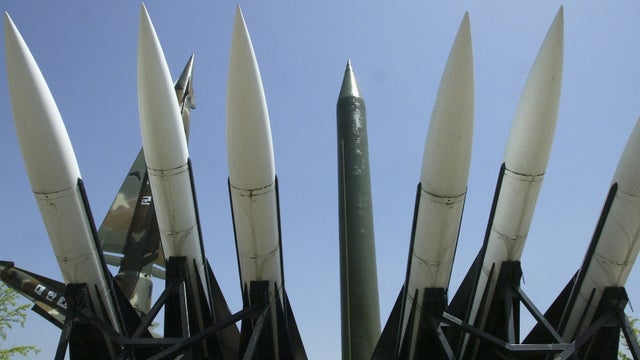
Behind closed doors, Congress is in the process of making a decision that will have a profound impact on nuclear risk levels and global security. Hanging in the balance is a decision to recklessly increase production of plutonium bomb cores or “pits.” The NDAA conference committee must not make that mistake.
Pits are the triggers for thermonuclear weapons. Currently, the United States does not manufacture plutonium pits on an industrial scale. In its fiscal 2020 budget request the National Nuclear Security Administration (NNSA) seeks authorization to produce at least 80 plutonium pits per year by 2030 at two facilities separated by some 1,500 miles. The Senate NDAA fully funds the request. The House instead authorizes 30 pits per year, all at the Los Alamos National Laboratory in NM. Los Alamos is presently authorized to produce 20 pits annually.
WIPP: New Mexico nuclear waste site’s five-year plan deemed ‘insufficient’ by state leaders
A group of governors from western states voiced “disappointment” in a recently released five-year strategic plan for ongoing operations at the Waste Isolation Pilot Plant, contending they weren’t adequately consulted on the future of the nuclear waste repository near Carlsbad.
BY: ADRIAN HEDDEN | carlsbadcurrentargus.com
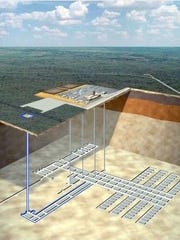
Don Hancock, director of the Nuclear Waste Program at the Southwest Research and Information Center said the plan was insufficient in that it did not detail plans and costs needed to keep WIPP open until 2050. He said the plan detailed projects intended to keep WIPP open beyond 2025, without adequately explaining the associated costs.
“It’s not a five-year plan,” Hancock said. “The centerpiece of the plan is WIPP being open until 2050. That’s 30-year plan. They’re saying WIPP’s timeline needs to be doubled. This should be saying how WIPP is transitioning from emplacement to closure, but it does the opposite.”
Hancock said the DOE must communicate with the public on either keeping WIPP, known as a pilot project, open indefinitely or developing other repositories to handle the low-level transuranic (TRU) waste disposed of at the site.
He said another alternative would be for the DOE to develop a plan to emplace the waste at the generator sites – multiple nuclear facilities across the country – themselves.
US official: Research finds uranium in Navajo women, babies
About a quarter of Navajo women and some infants who were part of a federally funded study on uranium exposure had high levels of the radioactive metal in their systems, decades after mining for Cold War weaponry ended on their reservation, a U.S. health official said. The early findings from the University of New Mexico study were shared Monday during a congressional field hearing in Albuquerque.
MARY HUDETZ, ASSOCIATED PRESS jhnewsandguide.com

Dr. Loretta Christensen — the chief medical officer on the Navajo Nation for Indian Health Service, a partner in the research — said 781 women were screened during an initial phase of the study that ended last year. Among them, 26% had concentrations of uranium that exceeded levels found in the highest 5% of the U.S. population, and newborns with equally high concentrations continued to be exposed to uranium during their first year, she said. The research is continuing as authorities work to clear uranium mining sites across the Navajo Nation.
“It forces us to own up to the known detriments associated with a nuclear-forward society,” said U.S. Rep. Deb Haaland, who is an enrolled member of Laguna Pueblo, a tribe whose jurisdiction lies west of Albuquerque.
The hearing held in Albuquerque by U.S. Sen. Tom Udall, Haaland and U.S. Rep. Ben Ray Lujan, all Democrats from New Mexico, sought to underscore the atomic age’s impact on Native American communities. The three are pushing for legislation that would expand radiation compensation to residents in their state, including post-1971 uranium workers and residents who lived downwind from the Trinity Test site in southern New Mexico.
An evolving nuclear agenda spurs plutonium pit production at LANL
A ‘dirty, dirty process’
BY: KENDRA CHAMBERLAINE | nmpoliticalreport.com

Los Alamos has a starring role in a shift to U.S. nuclear policy that’s two presidential terms in the making. Nuclear watchdog groups in the state are concerned about the United States’ evolving nuclear agenda, which will see a sharp increase in plutonium pit production at Los Alamos National Laboratory (LANL).
LANL recently released its $13 billion expansion proposal to accommodate increased pit production at the site. The expansion is part of a wider push across the country to ramp up the nuclear warhead manufacturing machine, according to Greg Mello, executive director of the Los Alamos Study Group.
Plutonium pits are central to nuclear weaponry. They are the “radioactive cores of modern nuclear weapons,” said Jay Coghlan, executive director of Nuclear Watch New Mexico. He added that the pits themselves are weapons. “It was essentially a plutonium pit that destroyed Nagasaki on August 9, 1945,”
The ramp-up is years in the making, as successive presidential administrations have struggled to address how to modernize the U.S. nuclear stockpile. But nuclear watchdog groups worry an increase in pit production at LANL would have negative repercussions for the region. While LANL has touted the proposed economic benefits of its proposal for the area, activists argue the dangers outweigh the benefits.
Trump’s rumored pullout from Open Skies Treaty would idle Offutt jets
BY: STEVE LIEWER | OMAHA WORLD HERALD omaha.com
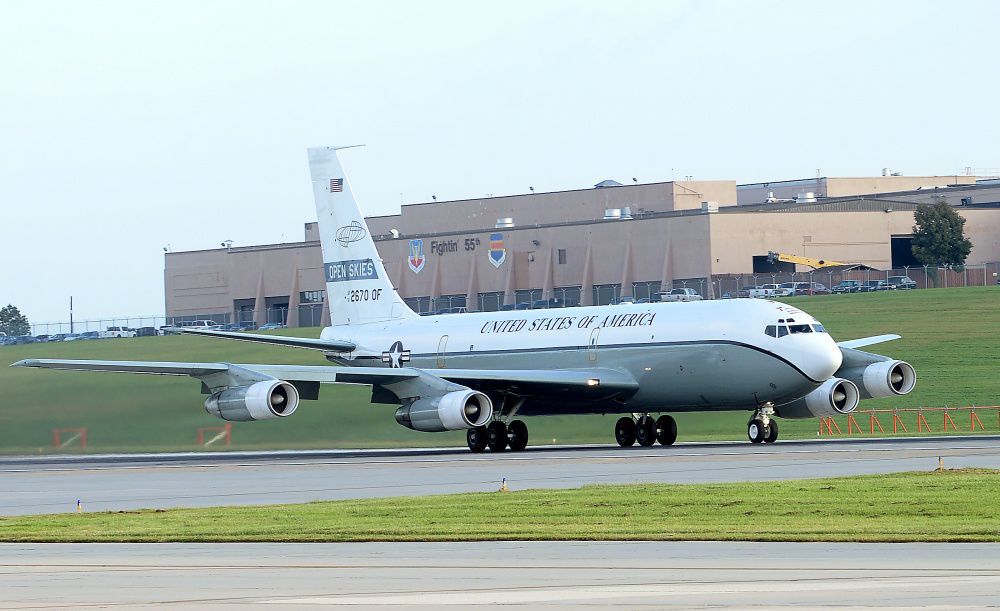
The Trump administration is believed to be preparing to pull out of the 34-nation Open Skies Treaty, a plan that would idle two Offutt-based OC-135B reconnaissance jets and their crews.
The treaty, proposed by President George H.W. Bush following the Cold War, allows member nations to fly supervised photo-reconnaissance flights over one another’s countries. This week, the U.S. and Germany are partnering on an Open Skies mission over Russia.
The planes are crewed and maintained at Offutt by the 45th Reconnaissance Squadron, which is part of the 55th Wing. Several dozen Offutt airmen are involved in the program.
The Nuclear Philanthropist
October 8 The MacArthur Foundation Director of the Nuclear Challenges Program Emma Belcher comes on Press the Button to discuss the role of philanthropy in fighting the two existential threats to humanity – nuclear weapons and climate change. On the Early Warning news segment, Erica Fein from Win Without War joins Tom Collina and Akshai Vikram from Ploughshares Fund to discuss the impeachment inquiry and how it’s affecting the debate over the defense budget.
Also, an answer to the question: Do nuclear weapons work in space?
Listen, Subscribe and Share on iTunes · Spotify · SoundCloud · YouTube · Google Play · Sticher
Also available on ploughshares.org/pressthebutton
There are about 26 nuclear weapons corporations earning nearly $100 billion per year amongst themselves. ‘They have vested financial interests in producing more and more nuclear weapons,’ says Dr Keith Suter (Australia), Economics Futurist and member of the Club of Rome, ‘and they exert intense political power on decision makers to protect these interests.‘
As the United Nations First Committee (Disarmament and International Security) starts its 2019 session in New York today, plans are progressing to publicise the colossal waste of money on nuclear weapons by physically ‘counting out’ the global nuclear weapons budget.
Over the next four weeks, governments meeting at the UN will debate and vote upon a number of nuclear disarmament resolutions. However, the impact of these resolutions is likely to be minimal as long as there continues to be strong financial interests in maintaining the nuclear arms race.
Count the Nuclear Weapons Money
The Count the Nuclear Weapons Money Action, which takes place during UN Disarmament Week (October 24-30), aims to raise media and public attention to this, and to publicise actions that indivduals and organisations can take to cut nuclear weapons budgets, end investments in nuclear weapons corporations, and shift these budgets and investments to better purposes.
The money counting will take place in a number of outside locations around Manhattan (as well as in New Jersey and Long Island) and at an interactive installation in an art gallery in the Chelsea neighborhood of Manhattan. Click here if you would like to join the counting.
Impeachment Slows All Hill Defense Biz; DoD Approps On Life Support
There’s not a lot of confidence out there about the prospects for a 2020 budget agreement. “A stripped down mini-NDAA may be all that could pass this year for defense,” says one long-time budget watcher.
BY COLIN CLARK | breakingdefense.com
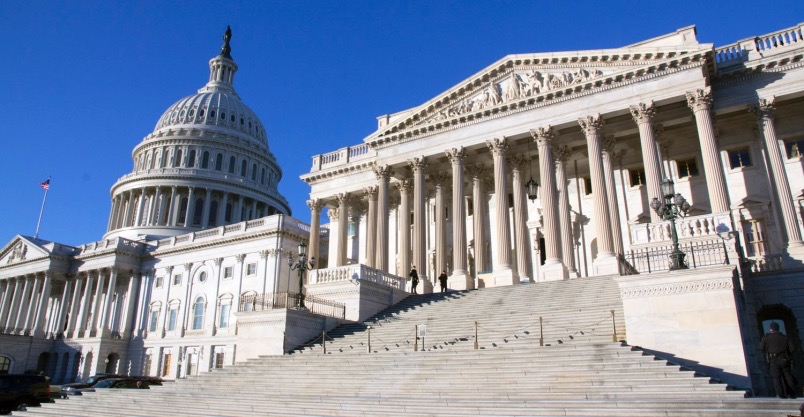
WASHINGTON: As the House of Representatives gears up to impeach President Trump, it’s getting harder and harder for anyone involved in defense to get a hearing with leadership, and the chances for a defense appropriations bill appear to be getting smaller every day.
While the chances for a second year of regular order (actually passing spending and major policy bills) already seemed unlikely, impeachment is sucking the oxygen out of the room, leaving regular order gasping for air. President Trump’s decision to take $3.6 billion from military construction accounts to build the so-called wall along the border with Mexico probably killed the chances for a defense spending bill. Add impeachment and the experts say abandon hope, all ye who enter the Capitol.
We’re More at Risk of Nuclear War With Russia Than We Think
U.S. lawmakers on both sides of the aisle need to start addressing the danger.
BY: GEORGE BEEBE | politico.com

In the 1950s and 1960s, Americans genuinely and rightly feared the prospect of nuclear war with the Soviet Union. Schoolchildren regularly participated in air raid drills. Federal, state and local governments prepared for operations in the event of a nuclear emergency. More than a few worried citizens built backyard bomb shelters and stockpiled provisions.
Today, that old dread of disaster has all but disappeared, as have the systems that helped preclude it. But the actual threat of nuclear catastrophe is much greater than we realize. Diplomacy and a desire for global peace have given way to complacency and a false sense of security that nuclear escalation is outside the realm of possibility. That leaves us unprepared for—and highly vulnerable to—a nuclear attack from Russia.
The most recent sign of American complacency was the death, a few weeks ago, of the Intermediate-Range Nuclear Forces Treaty—a pivotal 1987 agreement that introduced intrusive on-site inspection provisions, destroyed an entire class of dangerous weaponry, and convinced both Washington and Moscow that the other wanted strategic stability more than strategic advantage.
Trump Claims Energy Secretary Rick Perry Is Behind Ukraine Call at Heart of Impeachment Inquiry: Report
President Trump told House Republicans that he made his now infamous phone call to Ukrainian President Volodymyr Zelensky at the urging of Energy Secretary Rick Perry — a call Trump claimed he didn’t even want to make.
BY ANNA KAPLAN | thedailybeast.com Oct. 5, 2019
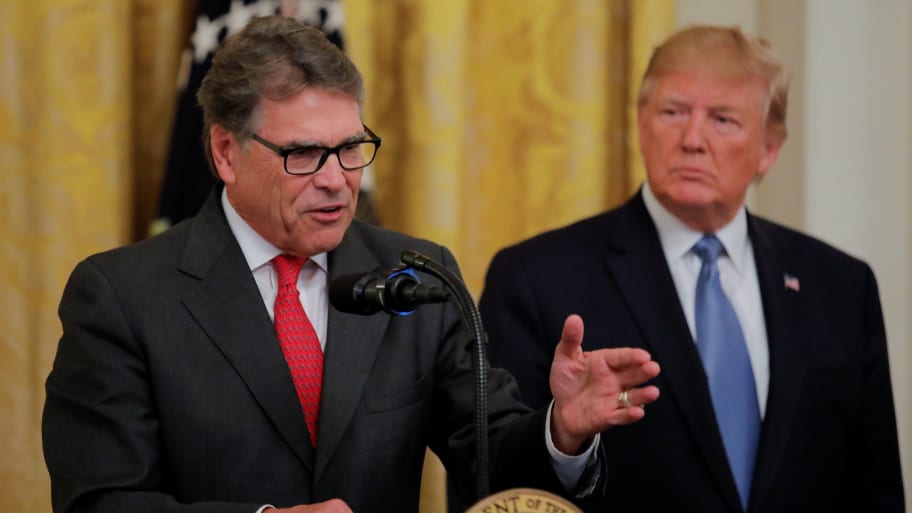
President Trump has reportedly tried to pin the explosive Ukraine call at the center of an impeachment inquiry on Energy Secretary Rick Perry. Axios reports that the president claimed Perry had asked him to make the July phone call to Ukrainian President Volodymyr Zelensky that sparked a whistleblower complaint. Trump reportedly claimed that he did not even want to call Zelensky, but said Perry had wanted him to inquire about a liquified natural gas plant. Trump is currently facing an impeachment inquiry for allegedly using that phone call to pressure Zelensky to pursue an investigation into former vice president Joe Biden and his son’s ties to a major Ukrainian gas company.
Rapidly expanding nuclear arsenals in Pakistan and India portend regional and global catastrophe
The title of a new study by Toon et al, published this week in Science Advances, speaks volumes: “Rapidly Expanding nuclear arsenals in Pakistan and India portend regional and global catastrophe.”
advances.sciencemag.org | PSR’s press statement | usatoday.com | icanw.org

The study models the potential impacts of a regional nuclear conflict and found that, given the increased size and power of their respective nuclear arsenals, the effects of a nuclear conflict between India and Pakistan would have even more catastrophic impacts than previously thought.
Top Health Expert Warns of Drinking Water Risks in Piketon Radiation Case
“The source of the uranium and other poisonous substances found in the air and on school property — the Portsmouth Gaseous Diffusion Plant near Piketon, Ohio, which made material for nuclear bombs throughout the Cold War — is owned by the federal government. Simply put, the feds aren’t working very hard to investigate themselves.”
BY STUART H. SMITH | stuarthsmith.com
One thing that I’ve found to be a constant in more than 25 years of working cases around pollution from radiation: A good outside expert will often tell citizens the things that government or big business simply can’t or won’t.
IG: Embattled coalition should return up to $300K to DOE
ARTICLE BY: T.S. LAST | abqjournal.com
SANTA FE – The U.S. Department of Energy’s inspector general is recommending that the department seek reimbursement of up to $300,000 in DOE grant money that a coalition of local governments in northern New Mexico didn’t properly account for.
“The Regional Coalition is not the effective lobbying voice for clean up at Los Alamos that it claims to be because it condones DOE’s plan for cleanup on the cheap that will leave the vast majority of radioactive and toxic wastes permanently buried above our groundwater,” Jay Coghlan of Nuclear Watch New Mexico said in a statement Wednesday.
“The Coalition should pay the American taxpayer back whatever it improperly spent and be terminated. At a minimum, the City of Santa Fe should resign from this discredited Coalition right away.”
October 1 House Democrats launched an impeachment inquiry against President Donald Trump last week. What does this mean for nuclear policy and national security? Ro Khanna, US Representative from California’s 17th congressional district, joins Joe Cirincione for a special interview on the explosive allegations against the US president and the need to prevent a new war of choice during this time. Rep. Khanna, with Rep. Matt Gaetz (R-FL), introduced a bipartisan amendment to the annual National Defense Authorization Act to prevent federal funds from being used for any military force against Iran without congressional authorization. “In the Silo” provides an exclusive look at the August 6 protest in front of the Lawrence Livermore National Laboratory, featuring narration by Ploughshares Fund Development Associate Elissa Karim.
News summary with Mary Kaszynski, Joe Cirincione, and Abigail Stowe-Thurston of the Center for Arms Control and Non-Proliferation. Joe Cirincione answers a question from Susan in California.
Listen, Subscribe and Share on iTunes · Spotify · SoundCloud · YouTube · Google Play · Sticher
Also available on ploughshares.org/pressthebutton

BY THAD MOORE tmoore@postandcourier.com
About this series
This article is the second part in “Lethal Legacy,” The Post and Courier’s investigation into the nation’s plans for disposing of plutonium, the dangerous metal that triggers nuclear weapons. This installment probes the Department of Energy’s failed MOX project, an ambitious but doomed effort to clean up the legacy of the Cold War.
Part I: Why South Carolina is likely stuck with a stockpile of the nation’s most dangerous nuclear materials
Dogged by faulty assumptions and lacking political will, the federal government squandered billions of dollars and an opportunity to dispose of the nation’s most dangerous nuclear material by chasing a massive construction project in South Carolina that was doomed from the start.
The MOX saga reveals an unsettling reality of the nuclear era after the Cold War. The U.S. and the world’s other nuclear powers have proven they are capable of pulling the explosive potential out of atoms, but they have proven unable to dispose of a creation that will retain immense power and be a danger for eternity.
What is MOX? MOX, short for mixed-oxide, is a type of fuel for commercial nuclear reactors. It gets its name from the combination of two oxidized nuclear metals: plutonium and uranium.The U.S. government and Russia agreed to make MOX fuel with highly enriched plutonium, which they made for nuclear weapons during the Cold War. The idea was to make the plutonium less potent and generate electricity by reacting it in power plants; the project’s supporters described it as a way for the countries to turn their “swords into plowshares.”
Nuclear weapons: Explained in numbers
There are far fewer nuclear weapons now than at the height of the Cold War and the major nuclear powers have all signed up to the principle of disarmament. But there are other countries that possess nuclear weapons which have not signed up to any arms control treaties.
And with fears of a renewed nuclear arms race between the US, Russia and China, the topic is high on the agenda at this year’s UN General Assembly. Reality Check’s Jack Goodman takes a look at the facts and figures behind the world’s nuclear arsenals.
Motion graphics by Jacqueline Galvin. | 26 Sep 2019 © bbc.com
Is it time to ditch the NPT?
“Nuclear weapon states have used this treaty to argue that their nuclear weapons are legal and a sovereign right. As a result, the NPT became the cornerstone of a severely hypocritical nuclear order where a few states regard wielding their nuclear weapons as legitimate while proscribing this sovereign right to other states…nuclear weapon states have no intention to give up their nuclear weapons.”
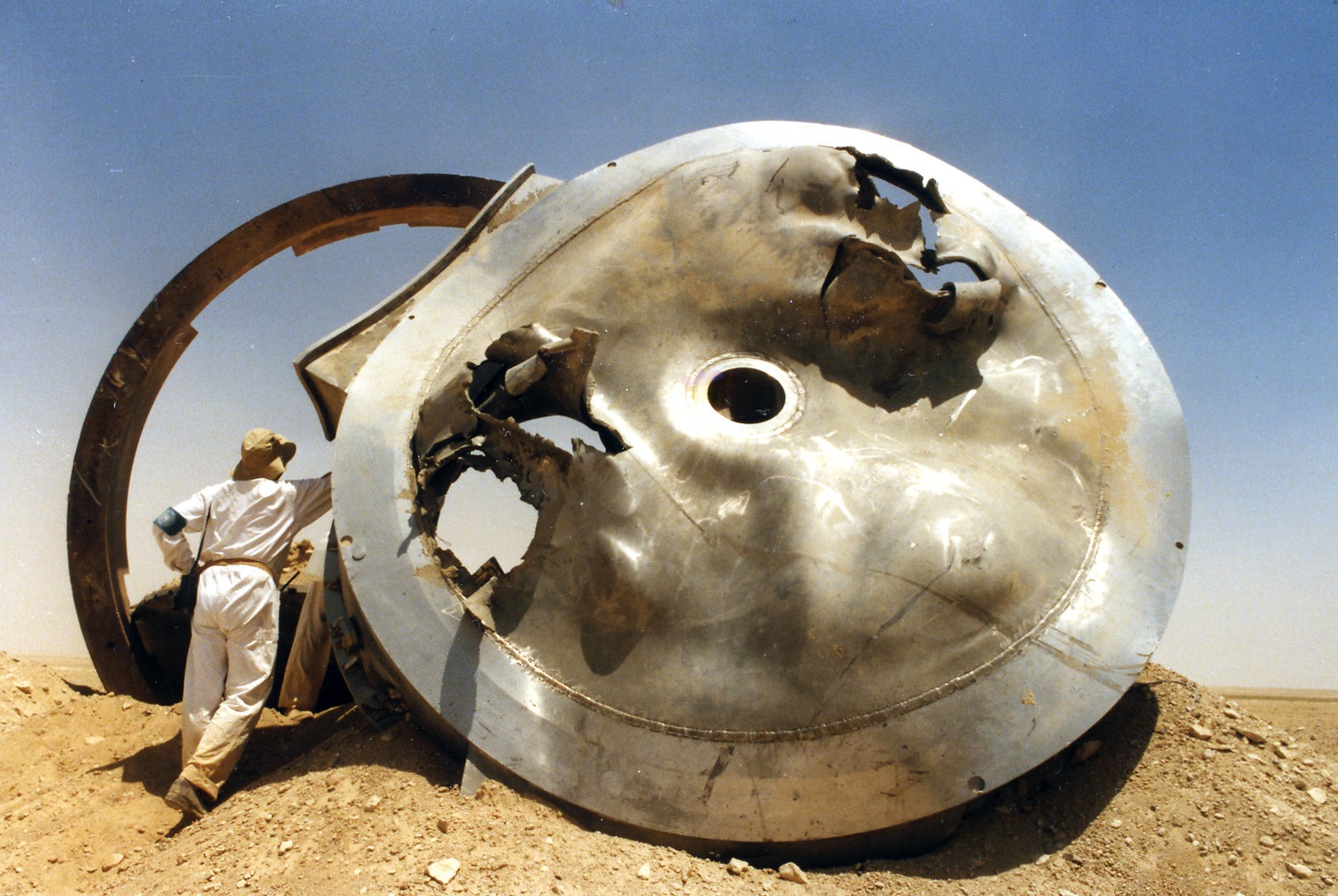
BY JOELIEN PRETORIU & TOM SAUER | thebulletin.org ![]()
In 2020, the participants in the 1970 Treaty on the Non-Proliferation of Nuclear Weapons (NPT) will congregate for the treaty’s 10th review conference. Which means that it may be a good time to re-examine the relevance of the NPT, and even consider the idea of dropping this treaty in its entirety, in favor of the new kid on the block: the 2017 Treaty on the Prohibition of Nuclear Weapons, also know as the Ban Treaty. At the risk of grossly oversimplifying, one treaty seeks to stop the further spread of nuclear weapons, while the other goes further and seeks to get rid of them entirely. This difference is reflected in their formal titles.
New Aerial Photos Released of Trifecta of U.S. Nuclear Construction Debacles
“We are pleased to facilitate distribution of the photos of the three failed nuclear projects in South Carolina and Georgia as close observation of them will reveal the status of the sites and where so much money has been needlessly wasted,” said Tom Clements, Director of Savannah River Site Watch (SRS Watch). “It is stunning to realize that perhaps $40 billion has been spent so far on the three sites, with the cost at all of them going up daily, money that should have been spent on projects of positive benefit to the public,” added Clements. “The photos commemorate the three largest, failed nuclear construction projects in the United States and will be of use when the proper investigations into the failed projects are conducted,” added Clements.
How a $5 part used to modernize nuclear warheads could cost $850 million to fix
World’s first nuclear smart bomb to become even more expensive..
BY AARON MEHTA | defensenews.com
WASHINGTON — Issues with commercial parts on two nuclear warhead modernization projects could cost up to $850 million to fix, but the agency in charge of America’s warheads believes it has a solution.
The issue, first revealed by Verdon during the Sept. 4 Defense News Conference, would put both warhead modernization programs at an 18- to 20-month delay of their first production units, although NNSA is hopeful there won’t be significant delays on the overall program timelines.
The parts in question are commercially available capacitors that, during stress testing, did not give NNSA confidence they could survive the 20-30 years needed for these designs. Verdon stressed that the parts were not at risk of failure under normal circumstances, but that the agency was acting out of an abundance of caution for the long-term life of the weapons.
That caution is pricey: the Original capacitors, Verdon said, ran about $5 per unit. The upgraded ones, built to a higher standard NNSA believes can survive the lifetime of the programs, come in at $75 per unit. All told, the B61-12 will cost an extra $600-700 million, and the W88 will cost about $120-$150 million because of the capacitor issue.
Federal Court Vacates former Y-12 Bomb Plant Ruling
ARTICLE FROM HUNGTINGTON NEWS huntingtonnews.net
“With this ruling,” said Ralph Hutchison, coordinator of the Oak Ridge Environmental Peace Alliance, “the NNSA no longer has any legal authority to continue construction of the Uranium Processing Facility bomb plant.” The decision may have ramifications for NNSA’s efforts to expand nuclear weapons production at other sites, too, including Los Alamos, NM and Savannah River, SC, where environmental scoping is underway for a new plutonium pit manufacturing facility.
Jay Coghlan, director of co-plaintiff Nuclear Watch New Mexico, said, “Uranium and plutonium components manufacturing are two sides of the same coin of expanding nuclear weapons production in an escalating arms race. The Department of Energy should take this court ruling against its Uranium Processing Facility as a warning that it must also comply with National Environmental Policy Act requirements while ill-advisably expanding the production of plutonium pits, the radioactive cores of nuclear weapons.”
The ruling also points out the crucial role the Defense Nuclear Facilities Safety Board plays in monitoring safety issues at Y-12 and across the nuclear weapons complex. Since last year, the Department of Energy has worked to reduce the Safety Board’s access to some nuclear facilities, even issuing a revised Order to limit the information available to the Board and the restricting who the Board can and cannot speak to directly.
12 States join the Nuclear Ban Treaty on International Day for the Total Elimination of Nuclear Weapons 2019
On the International Day for the Total Elimination of Nuclear Weapons, 12 states took another significant step towards achieving this goal by signing or ratifying the UN Treaty on the Prohibition of Nuclear Weapons, during a special High-Level Ceremony at the UN Headquarters in New York.
The five nations that ratified during the ceremony are:
- Bangladesh
- Kiribati
- Laos
- Maldives
- Trinidad & Tobago
These states are also joined by Ecuador, which became the 27th state to ratify the Treaty on September 25th, one day before the ceremony.
The following states signed on to the Treaty: Botswana, Dominica, Grenada, Lesotho, St Kitts and Nevis, Tanzania and Zambia, as well as the Maldives and Trinidad and Tobago (as the latter two states both signed and ratified the Treaty during the ceremony).
The treaty now has 79 signatories and 32 States Parties. By signing, a State commits to not take any action that would undermine the treaty’s object and purpose. Upon depositing its instrument of ratification, acceptance, approval or accession, a state becomes legally bound by the terms of the treaty. When the Treaty has 50 states Parties it will enter into force, making nuclear weapons illegal under international law.
The ceremony was hosted by long-time champions of the Treaty: Austria, Brazil, Costa Rica, Indonesia, Ireland, Mexico, New Zealand, Nigeria, South Africa and Thailand and enabled presidents and foreign ministers to take this important step while they were gathered at the UNGA.
Newly-elected President of the UN General Assembly, Mr Tijjani Muhammad-Bande of Nigeria, opened the ceremony, and spoke passionately in support of the Treaty’s importance in ending nuclear weapons. “We commend states that have joined TPNW and urge those who have not done so to do join in this most vital action,“ he said during his address to the UNGA Plenary event earlier in the day.
Beatrice Fihn, Executive Director of ICAN, celebrated the move by these 12 countries and the outspoken support for the Treaty around the world throughout the day. “Away from most cameras, we come together to do the actual work of nuclear disarmament. For the good of your people and the good of the world you propel the Treaty toward entry-into-force […] Today, in this room, I feel the scale tilting toward the Elimination of Nuclear Weapons. This day of action gives us all hope at a bleak time.”
After today, the treaty is almost two-thirds of the way to its entry into force, and this momentum is expected to continue. Several countries have confirmed to ICAN that their ratifications are imminent, and campaigners around the world will not stop until every country is on board.
Join the movement to end nuclear weapons
The full ceremony can be viewed here:
Nuclear power is not the answer in a time of climate change
Wild weather, fires, rising sea levels, earthquakes and warming water temperatures all increase the risk of nuclear accidents, while the lack of safe, long-term storage for radioactive waste remains a persistent danger.
BY HEIDI HUTNER & ERICA CIRINO | aeon.co
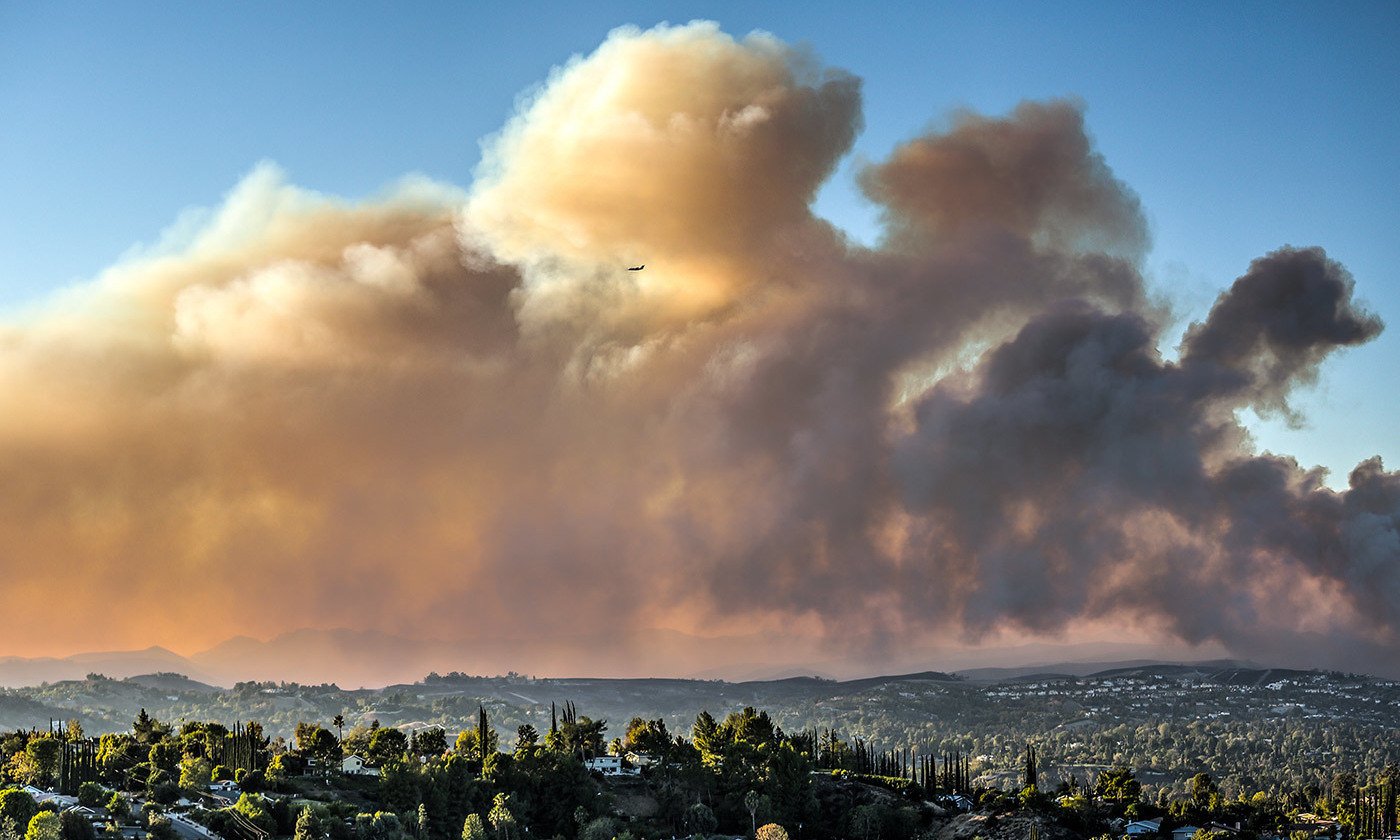
Proponents of nuclear power say that the reactors’ relative reliability and capacity make this a much clearer choice than other non-fossil-fuel sources of energy, such as wind and solar, which are sometimes brought offline by fluctuations in natural resource availability. Yet no one denies that older nuclear plants, with an aged infrastructure often surpassing expected lifetimes, are extremely inefficient and run a higher risk of disaster.
‘The primary source of nuclear power going forward will be the current nuclear fleet of old plants,’ said Joseph Lassiter, an energy expert and nuclear proponent who is retired from Harvard University. But ‘even where public support exists for [building new] nuclear plants, it remains to be seen if these new-build nuclear plants will make a significant contribution to fossil-emissions reductions given the cost and schedule overruns that have plagued the industry.’
Nuclear Abolition: The Road from Armageddon to Transformation
Nuclear weapons pose a grave threat to the future of civilization. As long as we allow these weapons to exist, we flirt with the catastrophe that they will be used, whether intentionally or accidentally.
ESSAY BY DAVID KRIEGER
Great Transition Initiative (August 2018), http://www.greattransition.org/publication/nuclear-abolition.
Meanwhile, nuclear weapons skew social priorities, create imbalances of power, and heighten geopolitical tension. Diplomacy has brought some noteworthy steps in curbing risks and proliferation, but progress has been uneven and tenuous. The ultimate aim of abolishing these weapons from the face of the earth—the “zero option”—faces formidable challenges of ignorance, apathy, and fatigue.
Yet, the total abolition of nuclear weapons is essential for a Great Transition to a future rooted in respect for life, global solidarity, and ecological resilience.
Judge voids UPF decision, requires more seismic hazard analysis
BY: JOHN HUOTARI oakridgetoday.com
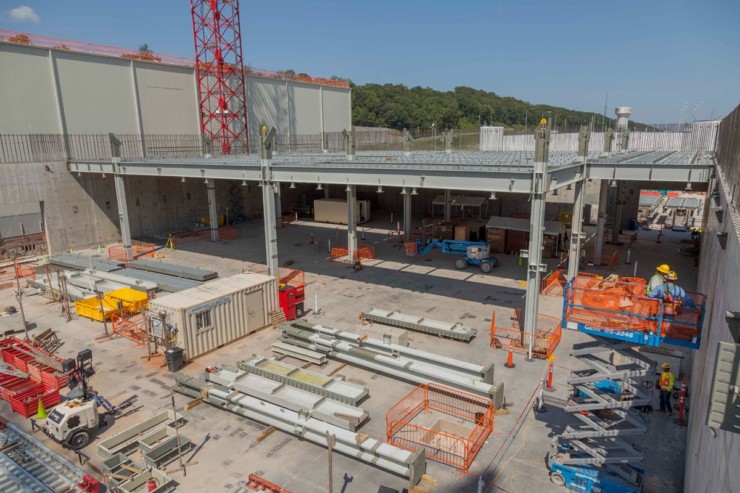
A federal judge in Knoxville on Tuesday said a critical decision made in 2016 for enriched uranium operations at the Y-12 National Security Complex, including for the $6.5 billion Uranium Processing Facility, violated a national environmental law, and she ordered the decision vacated, or set aside.
The UPF is already under construction, and Wedenesday morning, the National Nuclear Security Administration, which oversees work at Y-12, said construction will continue.
The 104-page opinion and order was filed in U.S. District Court on Tuesday by Chief U.S. District Judge Pamela L. Reeves.
The lawsuit was initially filed in U.S. District Court in the District of Columbia, but it was later moved to the Eastern District of Tennessee. Besides OREPA, the plaintiffs included two other public interest organizations—Nuclear Watch of New Mexico and Natural Resources Defense Council of Washington, D.C.— and several individual plaintiffs.
Nuclear News Archives – 2018
Trump’s Defense Spending Is Out of Control, and Poised to Get Worse

BY MATT TAIBBI rollingstone.com
Using a time-honored trick, a bipartisan congressional panel argues we should boost the president’s record defense bill even more
A bipartisan commission has determined that President Trump’s recent record defense bill is insufficiently massive to keep America safe, and we should spend more, while cutting “entitlements.”
The National Defense Strategy Commission concluded the Department of Defense was too focused on “efficiency” and needed to accept “greater cost and risk” to search for “leap-ahead technologies” to help the U.S. maintain superiority.
Nuclear fallout: $15.5 billion in compensation and counting

BY JAMIE GREY & LEE ZURIK mysuncoast.com
November 12, 2018 at 1:00 PM EST – Updated November 12 at 10:54 AM
LOS ALAMOS, NEW MEXICO (InvestigateTV) – Clear, plastic water bottles, with the caps all slightly twisted open, fill a small refrigerator under Gilbert Mondragon’s kitchen counter. The lids all loosened by his 4- and 6-year old daughters because, at just 38, Mondragon suffers from limited mobility and strength. He blames his conditions on years of exposure to chemicals and radiation at the facility that produced the world’s first atomic bomb: Los Alamos National Laboratory. Mondragon is hardly alone in his thinking…
Continue reading
LANL Groundwater Discharge Permit Hearing Underway
BY TRIS DEROMA – lamonitor.com |
In opening testimony at a groundwater discharge permit hearing Wednesday, attorneys for a Los Alamos National Laboratory contractor said spraying the ground with water with remediated levels of chromium and RDX is environmentally safe. Chromium and RDX are known carcinogens. The chemicals are from contamination plumes found on the grounds of the laboratory in the 2000s.
Continue reading
NNMCAB Discusses Potential Impacts of DOE’s Possible Redefinition Of High-Level Radioactive Waste
 BY MAIRE O’NEILL
BY MAIRE O’NEILL
The Northern New Mexico Citizens Advisory Board is asking Department of Energy (DOE) Environment Management and New Mexico Environment Department to address the potential impacts of the possible redefinition of high-level radioactive waste (HLW) for the board.
Donald Trump Welcomes In the Age of “Usable” Nuclear Weapons
BY James Carroll, TomDispatch – truthout.org |
New Mexico Environment Department Conducts Hearing On LANL Groundwater Discharge Permit In Los Alamos
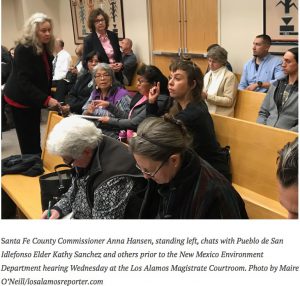
BY MAIRE O’NEILL thelosalamosreporter.com
A public hearing being conducted by the New Mexico Environment to consider the ground water discharge permit for Los Alamos National Laboratory headed into its second day Thursday in the Los Alamos Magistrate Courtroom.
On Wednesday, public comment was heard throughout the day from members of the public, tribal representatives, public officials and watchdog groups such as Nuclear Watch New Mexico.
Colorado Wildlife Refuge Opens at Former Nuclear Weapons Plant Amid Controversy
BY PAM WRIGHT weather.com
FORMER COLORADO THERMONUCLEAR PARTS PLANT NOW A WILDLIFE REFUGE
The U.S. Fish and Wildlife Service opened the gates of Rocky Flats National Wildlife Refuge on Sept. 15 near a former Environmental Protection Agency superfund site which used to house a plant that manufactured plutonium triggers for nuclear bombs for nearly four decades, the Associated Press reports.
Mikhail Gorbachev: A New Nuclear Arms Race Has Begun
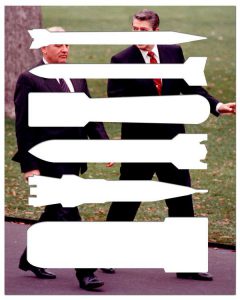
BY MIKHAIL GORBACHEV nytimes.com
Mr. Gorbachev is the former president of the Soviet Union.
Over 30 years ago, President Ronald Reagan and I signed in Washington the United States-Soviet Treaty on the elimination of intermediate- and shorter-range missiles. For the first time in history, two classes of nuclear weapons were to be eliminated and destroyed.
This was a first step. It was followed in 1991 by the Strategic Arms Reduction Treaty, which the Soviet Union signed with President George H.W. Bush, our agreement on radical cuts in tactical nuclear arms, and the New Start Treaty, signed by the presidents of Russia and the United States in 2010.
There’s no such thing as a perfect nuclear arms deal. Trump doesn’t get that.
We have them to reduce the chances of catastrophe.
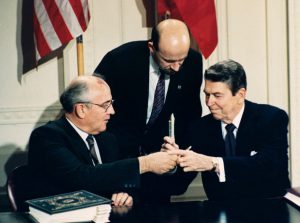
BY ALEXANDRA BELL The Washington Post
When President Trump walked away from the 2015 Iran nuclear deal — the Joint Comprehensive Plan of Action or JCPOA — he called it “disastrous,” saying that at “the heart of the Iran deal was a giant fiction that a murderous regime desired only a peaceful nuclear energy program.”
He had long complained the agreement was “the worst deal ever negotiated,” and that he could get a better one. This week, the president found a new target in the 1987 Intermediate-range Nuclear Force Treaty or INF, an agreement that helped diffuse Cold War nuclear tensions on the European continent by obligating the United States and Russia to eliminate all land-based missiles with ranges between a few hundred and a few thousand miles. On the sidelines of a political rally, Trump said “Russia has violated the agreement,” and added “I don’t know why President Obama didn’t negotiate or pull out.”
If his point is that these agreements are less than ideal, he’s right. What he doesn’t seem to get is that there’s no such thing as a perfect nuclear deal. Continue reading
Terminating the INF Treaty Could Be Disastrous
BY DEREK JOHNSON cnn.com
Derek Johnson is the executive director of Global Zero, the international movement for a world without nuclear weapons.
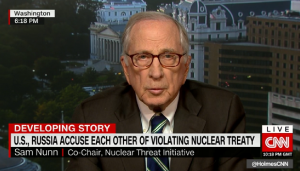
This was probably the first time most folks had ever heard of this Reagan-era arms control agreement that helped end the Cold War and kept Europe stable for a generation. Which may explain why the American public is not yet reacting to this disaster with the level of panic it deserves.
It’s tempting to think of treaties as little scraps of paper collecting dust on a historian’s bookshelf. Interesting, if you’re into that sort of thing, but largely irrelevant. The INF Treaty is something else entirely: This scrap of paper is a powerful leash, one of the few things restraining Russia and the United States (which together hold around 92% of the world’s nuclear weapons) from arms-racing us all into oblivion.




